Major theories and models of learning
Several ideas and priorities, then, affect how we teachers think about learning, including the curriculum, the difference between teaching and learning, sequencing, readiness, and transfer. The ideas form a “screen” through which to understand and evaluate whatever psychology has to offer education. As it turns out, many theories, concepts, and ideas from educational psychology do make it through the “screen” of education, meaning that they are consistent with the professional priorities of teachers and helpful in solving important problems of classroom teaching. In the case of issues about classroom learning, for example, educational psychologists have developed a number of theories and concepts that are relevant to classrooms, in that they describe at least some of what usually happens there and offer guidance for assisting learning. It is helpful to group the theories according to whether they focus on changes in behavior or in thinking. The distinction is rough and inexact, but a good place to begin. For starters, therefore, consider two perspectives about learning, called behaviorism (learning as changes in overt behavior) and constructivism, (learning as changes in thinking). The second category can be further divided into psychological constructivism (changes in thinking resulting from individual experiences), and social constructivism, (changes in thinking due to assistance from others). The rest of this chapter describes key ideas from each of these viewpoints. As I hope you will see, each describes some aspects of learning not just in general, but as it happens in classrooms in particular. So each perspective suggests things that you might do in your classroom to make students’ learning more productive.

Behaviorism: changes in what students do
Behaviorism is a perspective on learning that focuses on changes in individuals’ observable behaviors— changes in what people say or do. At some point we all use this perspective, whether we call it “behaviorism” or something else. The first time that I drove a car, for example, I was concerned primarily with whether I could actually do the driving, not with whether I could describe or explain how to drive. For another example: when I reached the point in life where I began cooking meals for myself, I was more focused on whether I could actually produce edible food in a kitchen than with whether I could explain my recipes and cooking procedures to others. And still another example—one often relevant to new teachers: when I began my first year of teaching, I was more focused on doing the job of teaching—on day-to-day survival—than on pausing to reflect on what I was doing.
Note that in all of these examples, focusing attention on behavior instead of on “thoughts” may have been desirable at that moment, but not necessarily desirable indefinitely or all of the time. Even as a beginner, there are times when it is more important to be able to describe how to drive or to cook than to actually do these things. And there definitely are many times when reflecting on and thinking about teaching can improve teaching itself. (As a teacher-friend once said to me: “Don’t just do something; stand there!”) But neither is focusing on behavior which is not necessarily less desirable than focusing on students’ “inner” changes, such as gains in their knowledge or their personal attitudes. If you are teaching, you will need to attend to all forms of learning in students, whether inner or outward.
In classrooms, behaviorism is most useful for identifying relationships between specific actions by a student and the immediate precursors and consequences of the actions. It is less useful for understanding changes in students’ thinking; for this purpose we need theories that are more cognitive (or thinking-oriented) or social, like the ones described later in this chapter. This fact is not a criticism of behaviorism as a perspective, but just a clarification of its particular strength or usefulness, which is to highlight observable relationships among actions, precursors and consequences. Behaviorists use particular terms (or “lingo,” some might say) for these relationships. One variety of behaviorism that has proved especially useful to educators is operant conditioning, described in the next section.
Operant conditioning: new behaviors because of new consequences
Operant conditioning focuses on how the consequences of a behavior affect the behavior over time. It begins with the idea that certain consequences tend to make certain behaviors happen more frequently. If I compliment a student for a good comment made during discussion, there is more of a chance that I will hear further comments from the student in the future (and hopefully they too will be good ones!). If a student tells a joke to classmates and they laugh at it, then the student is likely to tell more jokes in the future and so on.
The original research about this model of learning was not done with people, but with animals. One of the pioneers in the field was a Harvard professor named B. F. Skinner, who published numerous books and articles about the details of the process and who pointed out many parallels between operant conditioning in animals and operant conditioning in humans (1938, 1948, 1988). Skinner observed the behavior of rather tame laboratory rats (not the unpleasant kind that sometimes live in garbage dumps). He or his assistants would put them in a cage that contained little except a lever and a small tray just big enough to hold a small amount of food. (Figure 1 shows the basic set-up, which is sometimes nicknamed a “Skinner box.”) At first the rat would sniff and “putter around” the cage at random, but sooner or later it would happen upon the lever and eventually happen to press it. Presto! The lever released a small pellet of food, which the rat would promptly eat. Gradually the rat would spend more time near the lever and press the lever more frequently, getting food more frequently. Eventually it would spend most of its time at the lever and eating its fill of food. The rat had “discovered” that the consequence of pressing the level was to receive food. Skinner called the changes in the rat’s behavior an example of operant conditioning , and gave special names to the different parts of the process. He called the food pellets the reinforcement and the lever-pressing the operant (because it “operated” on the rat’s environment). See below.

Figure 1: Operant conditioning with a laboratory rat
Skinner and other behavioral psychologists experimented with using various reinforcers and operants. They also experimented with various patterns of reinforcement (or schedules of reinforcement ), as well as with various cues or signals to the animal about when reinforcement was available. It turned out that all of these factors—the operant, the reinforcement, the schedule, and the cues—affected how easily and thoroughly operant conditioning occurred. For example, reinforcement was more effective if it came immediately after the crucial operant behavior, rather than being delayed, and reinforcements that happened intermittently (only part of the time) caused learning to take longer, but also caused it to last longer.
Operant conditioning and students’ learning: Since the original research about operant conditioning used animals, it is important to ask whether operant conditioning also describes learning in human beings, and especially in students in classrooms. On this point the answer seems to be clearly “yes.” There are countless classroom examples of consequences affecting students’ behavior in ways that resemble operant conditioning, although the process certainly does not account for all forms of student learning (Alberto & Troutman, 2005). Consider the following examples. In most of them the operant behavior tends to become more frequent on repeated occasions:
- A seventh-grade boy makes a silly face (the operant) at the girl sitting next to him. Classmates sitting around them giggle in response (the reinforcement).
- A kindergarten child raises her hand in response to the teacher’s question about a story (the operant). The teacher calls on her and she makes her comment (the reinforcement).
- Another kindergarten child blurts out her comment without being called on (the operant). The teacher frowns, ignores this behavior, but before the teacher calls on a different student, classmates are listening attentively (the reinforcement) to the student even though he did not raise his hand as he should have.
- A twelfth-grade student—a member of the track team—runs one mile during practice (the operant). He notes the time it takes him as well as his increase in speed since joining the team (the reinforcement).
- A child who is usually very restless sits for five minutes doing an assignment (the operant). The teaching assistant compliments him for working hard (the reinforcement).
- A sixth-grader takes home a book from the classroom library to read overnight (the operant). When she returns the book the next morning, her teacher puts a gold star by her name on a chart posted in the room (the reinforcement).
These examples are enough to make several points about operant conditioning. First, the process is widespread in classrooms—probably more widespread than teachers realize. This fact makes sense, given the nature of public education: to a large extent, teaching is about making certain consequences (like praise or marks) depend on students’ engaging in certain activities (like reading certain material or doing assignments). Second, learning by operant conditioning is not confined to any particular grade, subject area, or style of teaching, but by nature happens in every imaginable classroom. Third, teachers are not the only persons controlling reinforcements. Sometimes they are controlled by the activity itself (as in the track team example), or by classmates (as in the “giggling” example). This leads to the fourth point: that multiple examples of operant conditioning often happen at the same time. A case study in Appendix A of this book ( The decline and fall of Jane Gladstone ) suggests how this happened to someone completing student teaching.
Because operant conditioning happens so widely, its effects on motivation are a bit complex. Operant conditioning can encourage intrinsic motivation , to the extent that the reinforcement for an activity is the activity itself. When a student reads a book for the sheer enjoyment of reading, for example, he is reinforced by the reading itself, and we we can say that his reading is “intrinsically motivated.” More often, however, operant conditioning stimulates both intrinsic and extrinsic motivation at the same time. The combining of both is noticeable in the examples in the previous paragraph. In each example, it is reasonable to assume that the student felt intrinsically motivated to some partial extent, even when reward came from outside the student as well. This was because part of what reinforced their behavior was the behavior itself—whether it was making faces, running a mile, or contributing to a discussion. At the same time, though, note that each student probably was also extrinsically motivated , meaning that another part of the reinforcement came from consequences or experiences not inherently part of the activity or behavior itself. The boy who made a face was reinforced not only by the pleasure of making a face, for example, but also by the giggles of classmates. The track student was reinforced not only by the pleasure of running itself, but also by knowledge of his improved times and speeds. Even the usually restless child sitting still for five minutes may have been reinforced partly by this brief experience of unusually focused activity, even if he was also reinforced by the teacher aide’s compliment. Note that the extrinsic part of the reinforcement may sometimes be more easily observed or noticed than the intrinsic part, which by definition may sometimes only be experienced within the individual and not also displayed outwardly. This latter fact may contribute to an impression that sometimes occurs, that operant conditioning is really just “bribery in disguise,” that only the external reinforcements operate on students’ behavior. It is true that external reinforcement may sometimes alter the nature or strength of internal (or intrinsic) reinforcement, but this is not the same as saying that it destroys or replaces intrinsic reinforcement. But more about this issue later!
Key concepts about operant conditioning: Operant conditioning is made more complicated, but also more realistic, by several additional ideas. They can be confusing because the ideas have names that sound rather ordinary, but that have special meanings with the framework of operant theory. Among the most important concepts to understand are the following:
- generalization
- discrimination
- schedules of reinforcement
The paragraphs below explain each of these briefly, as well as their relevance to classroom teaching and learning.
Extinction refers to the disappearance of an operant behavior because of lack of reinforcement. A student who stops receiving gold stars or compliments for prolific reading of library books, for example, may extinguish (i.e. decrease or stop) book-reading behavior. A student who used to be reinforced for acting like a clown in class may stop clowning once classmates stop paying attention to the antics.
Generalization refers to the incidental conditioning of behaviors similar to an original operant . If a student gets gold stars for reading library books, then we may find her reading more of other material as well—newspapers, comics, etc.–even if the activity is not reinforced directly. The “spread” of the new behavior to similar behaviors is called generalization. Generalization is a lot like the concept of transfer discussed early in this chapter, in that it is about extending prior learning to new situations or contexts. From the perspective of operant conditioning, though, what is being extended (or “transferred” or generalized) is a behavior, not knowledge or skill.
Discrimination means learning not to generalize. In operant conditioning, what is not overgeneralized (i.e. what is discriminated) is the operant behavior. If I am a student who is being complimented (reinforced) for contributing to discussions, I must also learn to discriminate when to make verbal contributions from when not to make them—such as when classmates or the teacher are busy with other tasks. Discrimination learning usually results from the combined effects of reinforcement of the target behavior and extinction of similar generalized behaviors. In a classroom, for example, a teacher might praise a student for speaking during discussion, but ignore him for making very similar remarks out of turn. In operant conditioning, the schedule of reinforcement refers to the pattern or frequency by which reinforcement is linked with the operant. If a teacher praises me for my work, does she do it every time, or only sometimes? Frequently or only once in awhile? In respondent conditioning, however, the schedule in question is the pattern by which the conditioned stimulus is paired with the unconditioned stimulus. If I am student with Mr Horrible as my teacher, does he scowl every time he is in the classroom, or only sometimes? Frequently or rarely?
Behavioral psychologists have studied schedules of reinforcement extensively (for example, Ferster, et al., 1997; Mazur, 2005), and found a number of interesting effects of different schedules. For teachers, however, the most important finding may be this: partial or intermittent schedules of reinforcement generally cause learning to take longer, but also cause extinction of learning to take longer. This dual principle is important for teachers because so much of the reinforcement we give is partial or intermittent. Typically, if I am teaching, I can compliment a student a lot of the time, for example, but there will inevitably be occasions when I cannot do so because I am busy elsewhere in the classroom. For teachers concerned both about motivating students and about minimizing inappropriate behaviors, this is both good news and bad. The good news is that the benefits of my praising students’ constructive behavior will be more lasting, because they will not extinguish their constructive behaviors immediately if I fail to support them every single time they happen. The bad news is that students’ negative behaviors may take longer to extinguish as well, because those too may have developed through partial reinforcement. A student who clowns around inappropriately in class, for example, may not be “supported” by classmates’ laughter every time it happens, but only some of the time. Once the inappropriate behavior is learned, though, it will take somewhat longer to disappear even if everyone—both teacher and classmates—make a concerted effort to ignore (or extinguish) it.
Finally, behavioral psychologists have studied the effects of cues . In operant conditioning, a cue is a stimulus that happens just prior to the operant behavior and that signals that performing the behavior may lead to reinforcement. In the original conditioning experiments, Skinner’s rats were sometimes cued by the presence or absence of a small electric light in their cage. Reinforcement was associated with pressing a lever when, and only when, the light was on. In classrooms, cues are sometimes provided by the teacher deliberately, and sometimes simply by the established routines of the class. Calling on a student to speak, for example, can be a cue that if the student does say something at that moment, then he or she may be reinforced with praise or acknowledgment. But if that cue does not occur—if the student is not called on—speaking may not be rewarded. In more everyday, non-behaviorist terms, the cue allows the student to learn when it is acceptable to speak, and when it is not.
Constructivism: changes in how students think
Behaviorist models of learning may be helpful in understanding and influencing what students do, but teachers usually also want to know what students are thinking , and how to enrich what students are thinking. For this goal of teaching, some of the best help comes from constructivism , which is a perspective on learning focused on how students actively create (or “construct”) knowledge out of experiences. Constructivist models of learning differ about how much a learner constructs knowledge independently, compared to how much he or she takes cues from people who may be more of an expert and who help the learner’s efforts (Fosnot, 2005; Rockmore, 2005). For convenience these are called psychological constructivism and social constructivism (or sometimes sociocultural theory ). As explained in the next section, both focus on individuals’ thinking rather than their behavior, but they have distinctly different implications for teaching.
Psychological constructivism: the independent investigator
The main idea of psychological constructivism is that a person learns by mentally organizing and reorganizing new information or experiences. The organization happens partly by relating new experiences to prior knowledge that is already meaningful and well understood. Stated in this general form, individual constructivism is sometimes associated with a well-known educational philosopher of the early twentieth century, John Dewey (1938–1998). Although Dewey himself did not use the term constructivism in most of his writing, his point of view amounted to a type of constructivism, and he discussed in detail its implications for educators. He argued, for example, that if students indeed learn primarily by building their own knowledge, then teachers should adjust the curriculum to fit students’ prior knowledge and interests as fully as possible. He also argued that a curriculum could only be justified if it related as fully as possible to the activities and responsibilities that students will probably have later , after leaving school. To many educators these days, his ideas may seem merely like good common sense, but they were indeed innovative and progressive at the beginning of the twentieth century.
Another recent example of psychological constructivism is the cognitive theory of Jean Piaget (Piaget, 2001; Gruber & Voneche, 1995). Piaget described learning as interplay between two mental activities that he called assimilation and accommodation . Assimilation is the interpretation of new information in terms of pre-existing concepts, information or ideas. A preschool child who already understands the concept of bird , for example, might initially label any flying object with this term—even butterflies or mosquitoes. Assimilation is therefore a bit like the idea of generalization in operant conditioning, or the idea of transfer described at the beginning of this chapter. In Piaget’s viewpoint, though, what is being transferred to a new setting is not simply a behavior (Skinner’s “operant” in operant conditioning), but a mental representation for an object or experience.
Assimilation operates jointly with accommodation , which is the revision or modification of pre-existing concepts in terms of new information or experience. The preschooler who initially generalizes the concept of bird to include any flying object, for example, eventually revises the concept to include only particular kinds of flying objects, such as robins and sparrows, and not others, like mosquitoes or airplanes. For Piaget, assimilation and accommodation work together to enrich a child’s thinking and to create what Piaget called cognitive equilibrium , which is a balance between reliance on prior information and openness to new information. At any given time, cognitive equilibrium consists of an ever-growing repertoire of mental representations for objects and experiences. Piaget called each mental representation a schema (all of them together—the plural—were called schemata ). A schema was not merely a concept, but an elaborated mixture of vocabulary, actions, and experience related to the concept. A child’s schema for bird , for example, includes not only the relevant verbal knowledge (like knowing how to define the word “bird”), but also the child’s experiences with birds, pictures of birds, and conversations about birds. As assimilation and accommodation about birds and other flying objects operate together over time, the child does not just revise and add to his vocabulary (such as acquiring a new word, “butterfly”), but also adds and remembers relevant new experiences and actions. From these collective revisions and additions the child gradually constructs whole new schemata about birds, butterflies, and other flying objects. In more everyday (but also less precise) terms, Piaget might then say that “the child has learned more about birds.”
Exhibit 1 diagrams the relationships among the Piagetian version of psychological constructivist learning. Note that the model of learning in the Exhibit is rather “individualistic,” in the sense that it does not say much about how other people involved with the learner might assist in assimilating or accommodating information. Parents and teachers, it would seem, are left lingering on the sidelines, with few significant responsibilities for helping learners to construct knowledge. But the Piagetian picture does nonetheless imply a role for helpful others: someone, after all, has to tell or model the vocabulary needed to talk about and compare birds from airplanes and butterflies! Piaget did recognize the importance of helpful others in his writings and theorizing, calling the process of support or assistance social transmission . But he did not emphasize this aspect of constructivism. Piaget was more interested in what children and youth could figure out on their own, so to speak, than in how teachers or parents might be able to help the young figure out (Salkind, 2004). Partly for this reason, his theory is often considered less about learning and more about development , or long-term change in a person resulting from multiple experiences that may not be planned deliberately. For the same reason, educators have often found Piaget’s ideas especially helpful for thinking about students’ readiness to learn, another one of the lasting educational issues discussed at the beginning of this chapter. We will therefore return to Piaget later to discuss development and its importance for teaching in more detail
Exhibit 1: Learning According to Piaget
Assimilation + Accommodation → Equilibrium → Schemata
Social Constructivism: assisted performance
Unlike Piaget’s orientation to individuals’ thinking in his version of constructivism, some psychologists and educators have explicitly focused on the relationships and interactions between a learner and other individuals who are more knowledgeable or experienced. This framework often is called social constructivism or sociocultural theory . An early expression of this viewpoint came from the American psychologist Jerome Bruner (1960, 1966, 1996), who became convinced that students could usually learn more than had been traditionally expected as long as they were given appropriate guidance and resources. He called such support instructional scaffolding —literally meaning a temporary framework like the ones used to construct buildings and that allow a much stronger structure to be built within it. In a comment that has been quoted widely (and sometimes disputed), Bruner wrote: “We [constructivist educators] begin with the hypothesis that any subject can be taught effectively in some intellectually honest form to any child at any stage of development.” (1960, p. 33). The reason for such a bold assertion was Bruner’s belief in scaffolding—his belief in the importance of providing guidance in the right way and at the right time. When scaffolding is provided, students seem more competent and “intelligent,” and they learn more.
Similar ideas were independently proposed by the Russian psychologist Lev Vygotsky (1978), whose writing focused on how a child’s or novice’s thinking is influenced by relationships with others who are more capable, knowledgeable, or expert than the learner. Vygotsky made the reasonable proposal that when a child (or novice) is learning a new skill or solving a new problem, he or she can perform better if accompanied and helped by an expert than if performing alone—though still not as well as the expert. Someone who has played very little chess, for example, will probably compete against an opponent better if helped by an expert chess player than if competing against the opponent alone. Vygotsky called the difference between solo performance and assisted performance the zone of proximal development (or ZPD for short)—meaning, figuratively speaking, the place or area of immediate change. From this social constructivist perspective, learning is like assisted performance (Tharp & Gallimore, 1991). During learning, knowledge or skill is found initially “in” the expert helper. If the expert is skilled and motivated to help, then the expert arranges experiences that let the novice to practice crucial skills or to construct new knowledge. In this regard the expert is a bit like the coach of an athlete—offering help and suggesting ways of practicing, but never doing the actual athletic work himself or herself. Gradually, by providing continued experiences matched to the novice learner’s emerging competencies, the expert-coach makes it possible for the novice or apprentice to appropriate (or make his or her own) the skills or knowledge that originally resided only with the expert. These relationships are diagrammed in Exhibit 2.
Exhibit 2: Learning According to Vygotsky
Novice → Zone of Proximal Development (ZPD) ← Expert
In both the psychological and social versions of constructivist learning, the novice is not really “taught” so much as simply allowed to learn. But compared to psychological constructivism, social constructivism highlights a more direct responsibility of the expert for making learning possible. He or she must not only have knowledge and skill, but also know how to arrange experiences that make it easy and safe for learners to gain knowledge and skill themselves. These requirements sound, of course, a lot like the requirements for classroom teaching. In addition to knowing what is to be learned, the expert (i.e. the teacher) also has to organize the content into manageable parts, offer the parts in a sensible sequence, provide for suitable and successful practice, bring the parts back together again at the end, and somehow relate the entire experience to knowledge and skills meaningful to the learner already. But of course, no one said that teaching is easy!
The teacher’s role in Psychological and Social Constructivism
As some of the comments above indicate, psychological and social constructivism have differences that suggest different ways for teachers to teach most effectively. The theoretical differences are related to three ideas in particular: the relationship of learning and long-term development, the role or meaning of generalizations and abstractions during development, and the mechanism by which development occurs.
The relationship of learning and long-term development of the child
In general psychological constructivism such as Piaget emphasize the ways that long-term development determines a child’s ability to learn, rather than the other way around. The earliest stages of a child’s life are thought to be rather self-centered and to be dependent on the child’s sensory and motor interactions with the environment. When acting or reacting to his or her surroundings, the child has relatively little language skill initially. This circumstance limits the child’s ability to learn in the usual, school-like sense of the term. As development proceeds, of course, language skills improve and hence the child becomes progressively more “teachable” and in this sense more able to learn. But whatever the child’s age, ability to learn waits or depends upon the child’s stage of development. From this point of view, therefore, a primary responsibility of teachers is to provide a very rich classroom environment, so that children can interact with it independently and gradually make themselves ready for verbal learning that is increasingly sophisticated.
Social constructivists such as Vygotsky, on the other hand, emphasize the importance of social interaction in stimulating the development of the child. Language and dialogue therefore are primary, and development is seen as happening as a result—the converse of the sequence pictured by Piaget. Obviously a child does not begin life with a lot of initial language skill, but this fact is why interactions need to be scaffolded with more experienced experts— people capable of creating a zone of proximal development in their conversations and other interactions. In the preschool years the experts are usually parents; after the school years begin, the experts broaden to include teachers. A teacher’s primary responsibility is therefore to provide very rich opportunities for dialogue, both among children and between individual children and the teacher.
The role of generalizations and abstractions during development
Consistent with the ideas above, psychological constructivism tends to see a relatively limited role for abstract or hypothetical reasoning in the life of children—and even in the reasoning of youth and many adults. Such reasoning is regarded as an outgrowth of years of interacting with the environment very concretely. As explained more fully in the next chapter (“Student development”), elementary-age students can reason, but they are thought to reason only about immediate, concrete objects and events. Even older youth are thought to reason in this way much, or even all of the time. From this perspective a teacher should limit the amount of thinking about abstract ideas that she expects from students. The idea of “democracy,” for example, may be experienced simply as an empty concept. At most it might be misconstrued as an oversimplified, overly concrete idea—as “just” about taking votes in class, for instance. Abstract thinking is possible, according to psychological constructivism, but it emerges relatively slowly and relatively late in development, after a person accumulates considerable concrete experience.
Social constructivism sees abstract thinking emerging from dialogue between a relative novice (a child or youth) and a more experienced expert (a parent or teacher). From this point of view, the more such dialogue occurs, then the more the child can acquire facility with it. The dialogue must, of course, honor a child’s need for intellectual scaffolding or a zone of proximal development. A teacher’s responsibility can therefore include engaging the child in dialogue that uses potentially abstract reasoning, but without expecting the child to understand the abstractions fully at first. Young children, for example, can not only engage in science experiments like creating a “volcano” out of baking soda and water, but also discuss and speculate about their observations of the experiment. They may not understand the experiment as an adult would, but the discussion can begin moving them toward adult-like understandings.
How development occurs
In psychological constructivism, as explained earlier, development is thought to happen because of the interplay between assimilation and accommodation —between when a child or youth can already understand or conceive of, and the change required of that understanding by new experiences. Acting together, assimilation and accommodation continually create new states of cognitive equilibrium . A teacher can therefore stimulate development by provoking cognitive dissonance deliberately: by confronting a student with sights, actions, or ideas that do not fit with the student’s existing experiences and ideas. In practice the dissonance is often communicated verbally, by posing questions or ideas that are new or that students may have misunderstood in the past. But it can also be provoked through pictures or activities that are unfamiliar to students—by engaging students in a community service project, for example, that brings them in contact with people who they had previously considered “strange” or different from themselves.
In social constructivism, as also explained earlier, development is thought to happen largely because of scaffolded dialogue in a zone of proximal development. Such dialogue is by implication less like “disturbing” students’ thinking than like “stretching” it beyond its former limits. The image of the teacher therefore is more one of collaborating with students’ ideas rather than challenging their ideas or experiences. In practice, however, the actual behavior of teachers and students may be quite similar in both forms of constructivism. Any significant new learning requires setting aside, giving up, or revising former learning, and this step inevitably therefore “disturbs” thinking, if only in the short term and only in a relatively minor way.
Implications of constructivism for teaching
Whether you think of yourself as a psychological constructivist or a social constructivist, there are strategies for helping students help in develop their thinking—in fact the strategies constitute a major portion of this book, and are a major theme throughout the entire preservice teacher education programs. For now, look briefly at just two. One strategy that teachers often find helpful is to organize the content to be learned as systematically as possible, because doing this allows the teacher to select and devise learning activities that are better tailored to students’ cognitive abilities, or that promote better dialogue, or both. One of the most widely used frameworks for organizing content, for example, is a classification scheme proposed by the educator Benjamin Bloom, published with the somewhat imposing title of Taxonomy of Educational Objectives: Handbook #1: Cognitive Domain (Bloom, et al., 1956; Anderson & Krathwohl, 2001). Bloom’s taxonomy , as it is usually called, describes six kinds of learning goals that teachers can in principle expect from students, ranging from simple recall of knowledge to complex evaluation of knowledge. (The levels are defined briefly in Error: Reference source not found with examples from Goldilocks and the Three Bears.)
Bloom’s taxonomy makes useful distinctions among possible kinds of knowledge needed by students, and therefore potentially helps in selecting activities that truly target students’ zones of proximal development in the sense meant by Vygotsky. A student who knows few terms for the species studied in biology unit (a problem at Bloom’s knowledge and comprehension levels), for example, may initially need support at remembering and defining the terms before he or she can make useful comparisons among species (Bloom’s analysis level). Pinpointing the most appropriate learning activities to accomplish this objective remains the job of the teacher-expert (that’s you), but the learning itself has to be accomplished by the student. Put in more social constructivist terms, the teacher arranges a zone of proximal development that allows the student to compare species successfully, but the student still has to construct or appropriate the comparisons for him or herself.
A second strategy may be coupled with the first. As students gain experience as students, they become able to think about how they themselves learn best, and you (as the teacher) can encourage such self-reflection as one of your goals for their learning. These changes allow you to transfer some of your responsibilities for arranging learning to the students themselves. For the biology student mentioned above, for example, you may be able not only to plan activities that support comparing species, but also to devise ways for the student to think about how he or she might learn the same information independently. The resulting self-assessment and self-direction of learning often goes by the name of metacognition —an ability to think about and regulate one’s own thinking (Israel, 2005). Metacognition can sometimes be difficult for students to achieve, but it is an important goal for social constructivist learning because it gradually frees learners from dependence on expert teachers to guide their learning. Reflective learners, you might say, become their own expert guides. Like with using Bloom’s taxonomy, though, promoting metacognition and self-directed learning is important enough that I will come back to it later in more detail (in the chapter on “Facilitating complex thinking”).
By assigning a more active role to expert helpers—which by implication includes teachers—than does the psychological constructivism, social constructivism may be more complete as a description of what teachers usually do when actually busy in classrooms, and of what they usually hope students will experience there. As we will see in the next chapter, however, there are more uses for a theory than its description of moment-to-moment interactions between teacher and students. As explained there, some theories can be helpful for planning instruction rather than for doing it. It turns out that this is the case for psychological constructivism, which offers important ideas about the appropriate sequencing of learning and development. This fact makes the psychological constructivism valuable in its own way, even though it (and a few other learning theories as well) may seem to omit mentioning teachers, parents, or experts in detail. So do not make up your mind about the relative merits of different learning theories yet!
Alberto, P. & Troutman, A. (2005). Applied behavior analysis for teachers, 7th edition . Upper Saddle River, NJ: Prentice Hall.
Anderson, L. & Krathwohl, D. (Eds.). (2001). A taxonomy for learning, teaching, and assessing: A revision of Bloom’s taxonomy of educational objectives . New York: Longman.
Bruner, J. (1960). The process of education . Cambridge, MA: Harvard University Press.
Bruner, J. (1966). Toward a theory of instruction . Cambridge, MA: Harvard University Press.
Bruner, J. (1996). The culture of education . Cambridge, MA: Harvard University Press.
Dewey, J. (1938/1998). How we think . Boston: Houghton Mifflin.
Ferster, C., Skinner, B. F., Cheney, C., Morse, W., & Dews, D. Schedules of reinforcement . New York: Copley Publishing Group.
Fosnot, C. (Ed.). (2005). Constructivism: Theory, perspectives, and practice, 2nd edition . New York: Teachers College Press.
Gruber, H. & Voneche, J. (Eds.). (1995). The essential Piaget. New York: Basic Books.
Israel, S. (Ed.). (2005). Metacognition in literacy learning. Mahwah, NJ: Erlbaum.
Mazur, J. (2005). Learning and behavior, 6th edition . Upper Saddle River, NJ: Prentice Hall.
Piaget, J. (2001). The psychology of intelligence . London, UK: Routledge.
Rockmore, T. (2005). On constructivist epistemology . Lanham, MD: Rowman & Littlefield Publishers.
Salkind, N. (2004). An introduction to theories of human development . Thousand Oaks, CA: Sage Publications.
Skinner, B. F. (1938). The behavior of organisms . New York: Appleton-Century-Crofts.
Skinner, B. F. (1948). Walden Two . New York: Macmillan.
Skinner, B. F. (1988). The selection of behavior: The operant behaviorism of B. F. Skinner . New York: Cambridge University Press.
Tharp, R. & Gallimore, R. (1991). Rousing minds to life: Teaching, learning, and schooling in social context . Cambridge, UK: Cambridge University Press.
Vygotsky, L. (1978). Mind in society: The development of higher psychological processes . Cambridge, MA: Harvard University Press.

Privacy Policy
- QUICK LINKS
- How to enroll
- Career services
5 educational learning theories and how to apply them

By Michael Feder
This article has been vetted by University of Phoenix's editorial advisory committee. Read more about our editorial process.
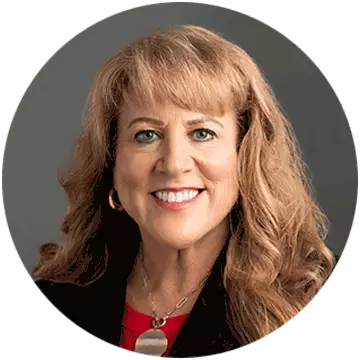
Reviewed by Pamela M. Roggeman , EdD, Dean, College of Education
At a glance
- There are five primary educational learning theories : behaviorism, cognitive, constructivism, humanism, and connectivism.
- Additional learning theories include transformative, social, and experiential .
- Understanding learning theories can result in a variety of outcomes , from improving communication between students and teachers to determining what students learn.
- Learn more about how University of Phoenix can aid you in your educational journey at phoenix.edu .
This article was updated on 12/4/2023.
How educational learning theories can impact your education
Teaching and learning may appear to be a universal experience. After all, everyone goes to school and learns more or less the same thing, right? Well, not quite.
As the prolific number of educational theorists in learning suggests, there’s actually an impressive variety of educational approaches to the art and science of teaching. Many of them have been pioneered by educational theorists who’ve studied the science of learning to determine what works best and for whom.
"Learning is defined as a process that brings together personal and environmental experiences and influences for acquiring, enriching or modifying one’s knowledge, skills, values, attitudes, behavior and worldviews," notes the International Bureau of Education . "Learning theories develop hypotheses that describe how this process takes place."
Generally, there are five widely accepted learning theories teachers rely on:
- Behaviorism learning theory
- Cognitive learning theory
- Constructivism learning theory
- Humanism learning theory
- Connectivism learning theory
Educational theorists, teachers, and experts believe these theories can inform successful approaches for teaching and serve as a foundation for developing lesson plans and curriculum.
Learn more about degree offerings at University of Phoenix!
What are learning theories?
Theories in education didn’t begin in earnest until the early 20th century, but curiosity about how humans learn dates back to the ancient Greek philosophers Socrates, Plato and Aristotle. They explored whether knowledge and truth could be found within oneself (rationalism) or through external observation (empiricism).
By the 19th century, psychologists began to answer this question with scientific studies. The goal was to understand objectively how people learn and then develop teaching approaches accordingly.
In the 20th century, the debate among educational theorists centered on behaviorist theory versus cognitive psychology. Or, in other words, do people learn by responding to external stimuli or by using their brains to construct knowledge from external data?
The five educational learning theories
Today, much research, study, and debate have given rise to the following five learning theories:
Why are learning theories important?
It is part of the human condition to crave knowledge. Consequently, numerous scientists, psychologists, and thought leaders have devoted their careers to studying learning theories. Understanding how people learn is a critical step in optimizing the learning process.
It is for this reason that teacher colleges or educator preparation programs spend so much time having teacher candidates study human development and multiple learning theories. Foundational knowledge of how humans learn, and specifically how a child learns and develops cognitively, is essential for all educators to be their most effective instructors in the classroom.
Pamela Roggeman, EdD, dean of University of Phoenix’s College of Education , explains her take on the role learning theory plays in preparing teachers:
"Just as no two people are the same, no two students learn in the exact the same way or at the exact same rate. Effective educators need to be able to pivot and craft instruction that meets the needs of the individual student to address the needs of the ‘whole child.’ Sound knowledge in multiple learning theories is a first step to this and another reason why great teachers work their entire careers to master both the art and the science of teaching."
Although espousing a particular learning theory isn’t necessarily required in most teaching roles, online learning author and consultant Tony Bates points out that most teachers tend to follow one or another theory, even if it’s done unconsciously.
So, whether you’re an aspiring or experienced teacher, a student, or a parent of a student (or some combination thereof), knowing more about each theory can make you more effective in the pursuit of knowledge.
Are there other theories in education?

Like students themselves, learning theories in education are varied and diverse. In addition to the five theories outlined above, there are still more options, including:
- Transformative learning theory: This theory is particularly relevant to adult learners. It posits that new information can essentially change our worldviews when our life experience and knowledge are paired with critical reflection.
- Social learning theory: This theory incorporates some of the tacit tenets of peer pressure. Specifically, students observe other students and model their own behavior accordingly. Sometimes it’s to emulate peers; other times it’s to distinguish themselves from peers. Harnessing the power of this theory involves getting students’ attention, focusing on how students can retain information, identifying when it’s appropriate to reproduce a previous behavior, and determining students’ motivation.
- Experiential learning theory: There are plenty of clichés and parables about teaching someone something by doing it, although it wasn’t until the early 1980s that it became an official learning theory. This approach emphasizes both learning about something and experiencing it so that students can apply knowledge in real-world situations.
How educational theories influence learning
Educational theories influence learning in a variety of ways. For teachers, learning theory examples can impact their approach to instruction and classroom management. Finding the right approach (even if it’s combining two or more learning theories) can make the difference between an effective and inspiring classroom experience and an ineffective one.
Applied learning theories directly impact a classroom experience in a variety of ways, such as:
- Providing students with structure and a comfortable, steady environment.
- Helping educators, administrators, students and parents align on goals and outcomes .
- Empowering teachers to be, as Bates says, "in a better position to make choices about how to approach their teaching in ways that will best fit the perceived needs of their students."
- Impacting how and what a person learns.
- Helping outsiders (colleges, testing firms, etc.) determine what kind of education you had or are receiving.
- Allowing students a voice in determining how the class will be managed .
- Deciding if instruction will be mostly teacher-led or student-led .
- Determining how much collaboration will happen in a classroom.
How to apply learning theories
So, how do learning theories apply in the real world? Education is an evolving field with a complicated future . And, according to Roggeman, the effects of applied educational theory can be long-lasting.
She explains:
"The learning theories we experienced as a student influence the type of work environment we prefer as adults. For example, if one experienced classrooms based heavily on social learning during the K-12 years, as an adult, one may be very comfortable in a highly collaborative work environment. Reflection on one’s own educational history might serve as an insightful tool as to one’s own fulfillment in the workplace as an adult."
Educational theories have come a long way since the days of Socrates and even the pioneers of behaviorism and cognitivism. And while learning theories will no doubt continue to evolve, teachers and students alike can reap the benefits of this evolution as we continue to develop our understanding of how humans most effectively learn.
Educational theories of learning are one thing. Adult learning theories are another. Learn more on our blog.
Ready to put theory into practice? Explore Foundations in Virtual Teaching at University of Phoenix!

ABOUT THE AUTHOR
Michael Feder is a content marketing specialist at University of Phoenix, where he researches and writes on a variety of topics, ranging from healthcare to IT. He is a graduate of the Johns Hopkins University Writing Seminars program and a New Jersey native!
want to read more like this?
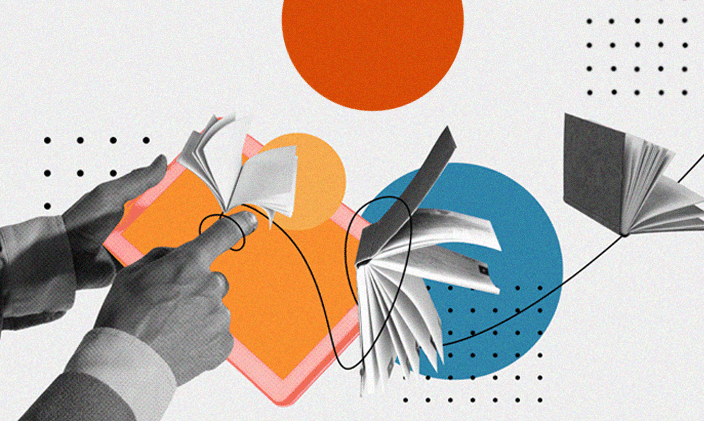
What Is a Director of Curriculum and Instruction?
Online degrees.
August 31, 2023 • 6 minutes
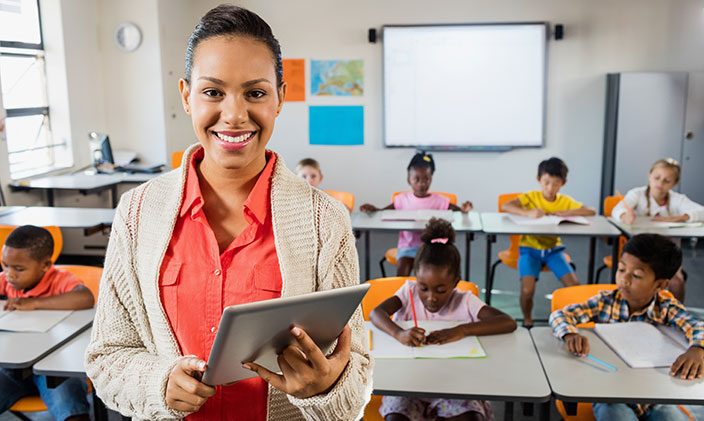
Comparing Early Childhood Education vs. Elementary Education
March 11, 2023 • 6 minutes
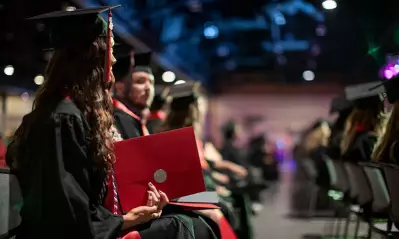
What Can You Do With an Associate Degree?
July 19, 2022 • 12 minutes
- Publications
Schools of the Future: Defining New Models of Education for the Fourth Industrial Revolution

World Economic Forum reports may be republished in accordance with the Creative Commons Attribution-NonCommercial-NoDerivatives 4.0 International Public License , and in accordance with our Terms of Use .
Further reading All related content

How can we prepare students for the Fourth Industrial Revolution? 5 lessons from innovative schools around the world
Here's how educational institutions can prepare students for the Fourth Industrial Revolution

Learning through play: how schools can educate students through technology
Learning through play has a critical role in education. Tech can help.
Global Education in Context: Four Models, Four Lessons
- Share article
Editor’s Intro: As part of a National Geographic Society -funded research project, a team of researchers is documenting how school systems are approaching global learning. Laura Engel , associate professor of international education and international affairs, George Washington University; Heidi Gibson, research assistant, George Washington University ; and Kayla Gatalica, manager, Global Programs , District of Columbia public schools, share the lessons they have learned.
The need to build the knowledge, skills, and dispositions required for the 21 st -century globalized world is well-recognized by education policymakers, researchers, and practitioners. Yet too often, there is a lack of a coherent picture of what global education looks like in the United States. The decentralized nature of the U.S. education system means that in many districts and states global education is built from the ground up. Some laudable projects have aimed to share initiatives across states and to connect state leaders. One example is the States Network on International Education, created by the Asia Society and Longview Foundation, currently involving 25 member states committed to building capacity in global education. Interactive online tools like Mapping the Nation and Global Education Certificates allow researchers, policymakers, and practitioners to learn more about district- and state-level initiatives.
Four Models
To better understand global education in context, a team from George Washington University (GW) and the District of Columbia public schools (DCPS) made a series of virtual and in-person site visits to North Carolina, Virginia, and Illinois. During each of the site visits, our team had the opportunity to hear perspectives from global education leaders, teachers, administrators, students, organizations, and policymakers. We also developed an extended case study focused on the work of the DCPS Global Education team, providing a fourth context from which to better understand global education policy and practice.

Each of these four contexts reveals a different model of global education. In North Carolina, an example of a top-down approach, the state board of education adopted a framework for global learning and created a process to assess and recognize efforts by districts, schools, and educators. North Carolina’s extensive rubric for schools and districts awards “global-ready” designations and also allows schools and districts to see where they fall on a global-ready continuum ranging from “early” to “model.”
In Illinois, a group of Naperville Central High School teachers leveraged district support and successfully pushed for legislation establishing the Illinois Global Scholars Certificate . As part of this push, global-learning advocates across the state joined forces to build a statewide global education network.
Virginia’s initiatives are currently more localized, with individual districts championing globally-focused educational approaches, especially related to schools’ study abroad and exchange programs. Advocates have also leveraged state programs, such as the Governor’s World Language Academies, and new policies, like the Profile of a Graduate initiative, in support of a focus on developing students’ skills for a global future.
Lastly, within our team, we have perspectives on the robust global programming in DCPS, which reveals a multipronged approach to global education. The DCPS Global Education team manages districtwide programs like International Food Days and fully funded study abroad as well as school-specific programs such as world-language instruction and Global Studies Schools.
Four Lessons Learned
These four distinct cases provide insights into the diversity of global education practice within the United States. They also offer common lessons on how to make progress toward global education goals:
1) The Power of the Champion Behind every example of a successful global education program, policy, or practice were champions—often individuals with the power and capacity to leverage change—who sought to invest in global education for all schools and students. In each of the four contexts, this role varied. For example, in the case of Illinois, two highly respected teachers have spurred a grassroots statewide movement, whereas, in North Carolina, global education leadership came from a state-level champion, providing district supports such as resources and training.
2) Leveraging Partnerships Movements in global education in each of the four contexts had much to do with the leveraging of partnerships. These partnerships involved a range of different stakeholders, including the business community, fellow schools and districts, nonprofit organizations, and the higher education community. The function of partnerships varied as well. In the District of Columbia and Virginia, for instance, partners provided global education opportunities, such as working with local embassies to give students access to experiential learning. In North Carolina, partners helped facilitate teacher exchange by sourcing educators who brought global perspectives to the classroom.
3) Developing and Telling the Story Experienced global education advocates know that generating support for global-learning initiatives often involves pitching these programs to the right person at the right time in the right way. Policymakers who have had transformative international experiences, such as DCPS’ former Chancellor Kaya Henderson’s time spent studying abroad, are more likely to see the value of global education. Strategic use of existing policies, such as tying new global education initiatives to Virginia’s Portrait of a Graduate requirements, can help convince district leadership. In other cases, strategic thinking is needed about the best level of governance to leverage change. In Illinois, after considering a district-level approach, advocates realized they would get better traction at the state level. Building support requires a canny assessment of how to leverage existing policies and attitudes, as well as understanding how to best explain the importance of global education.
4) Building a Network In each of the four contexts, we learned the value of cohesive networks in creating opportunities and spaces for global education policy, practice, and programs. These are cross-curricular, as well as across geographical boundaries. In Virginia, international approaches have often been confined to world-language classrooms, but advocates are beginning to reach out to other curricular areas for a more interdisciplinary approach. District and state leaders frequently remarked on the power of sharing their approaches and practices with others. By building strong networks across the state, such as the one in Illinois, advocates were able to push for change.
Across the four contexts and our lessons learned, there is a clear value added when district and state leaders connect and share practices, policies, and research about global education in K-12 U.S. settings. To further develop such cross-cutting conversations, we launched the K12 Global Forum, which hosted an inaugural convening last year at the United States Institute of Peace in Washington, D.C. We look forward to future convenings to continue to share information and advice with each other.
Connect with the authors and Heather on Twitter.
Image created on Pablo .
The opinions expressed in Global Learning are strictly those of the author(s) and do not reflect the opinions or endorsement of Editorial Projects in Education, or any of its publications.
Sign Up for EdWeek Update
Edweek top school jobs.

Sign Up & Sign In


15 Learning Theories in Education (A Complete Summary)
So what are educational learning theories and how can we use them in our teaching practice? There are so many out there, how do we know which are still relevant and which will work for our classes?
There are 3 main schemas of learning theories; Behaviorism, Cognitivism and Constructivism. In this article you will find a breakdown of each one and an explanation of the 15 most influential learning theories; from Vygotsky to Piaget and Bloom to Maslow and Bruner.
Swimming through treacle!
That’s what it feels like when you are trying to sort through and make sense of the vast amount of learning theories we have at our disposal.
Way back in ancient Greece, the philosopher, Plato , first pondered the question “How does an individual learn something new if the subject itself is new to them” (ok, so I’m paraphrasing, my ancient Greek isn’t very good!).
Since Plato, many theorists have emerged, all with their different take on how students learn. Learning theories are a set of principles that explain how best a student can acquire, retain and recall new information.
In this complete summary, we will look at the work of the following learning theorists.
Despite the fact there are so many educational theorists, there are three labels that they all fall under. Behaviorism , Cognitivism and Constructivism .
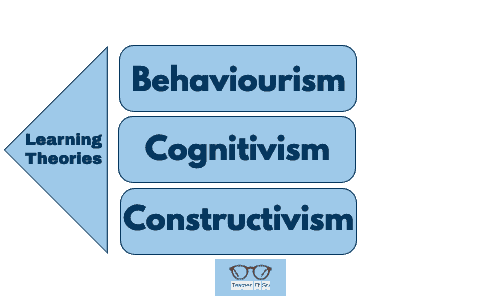
Behaviorism
Behaviorism is based on the idea that knowledge is independent and on the exterior of the learner. In a behaviorist’s mind, the learner is a blank slate that should be provided with the information to be learnt.
Through this interaction, new associations are made and thus learning occurs. Learning is achieved when the provided stimulus changes behavior. A non-educational example of this is the work done by Pavlov .
Through his famous “salivating dog” experiment, Pavlov showed that a stimulus (in this case ringing a bell every time he fed the dog) caused the dog to eventually start salivating when he heard a bell ring.
The dog associated the bell ring with being provided with food so any time a bell was rung the dog started salivating, it had learnt that the noise was a precursor to being fed.
I use a similar approach to classroom management.
I adapt my body language .
I have taught my students that if I stand in a specific place in the classroom with my arms folded, they know that I’m getting frustrated with the level of noise and they start to quieten down or if I sit cross-legged on my desk, I’m about to say something important, supportive and they should listen because it affects them directly.
Behaviorism involves repeated actions, verbal reinforcement and incentives to take part. It is great for establishing rules, especially for behavior management.
Cognitivism
In contrast to behaviorism, cognitivism focuses on the idea that students process information they receive rather than just responding to a stimulus, as with behaviorism.
There is still a behavior change evident, but this is in response to thinking and processing information.
Cognitive theories were developed in the early 1900s in Germany from Gestalt psychology by Wolfgang Kohler. In English, Gestalt roughly translates to the organization of something as a whole, that is viewed as more than the sum of its individual parts.
Cognitivism has given rise to many evidence based education theories, including cognitive load theory , schema theory and dual coding theory as well as being the basis for retrieval practice.
In cognitivism theory, learning occurs when the student reorganizes information, either by finding new explanations or adapting old ones.
This is viewed as a change in knowledge and is stored in the memory rather than just being viewed as a change in behavior. Cognitive learning theories are mainly attributed to Jean Piaget .
Examples of how teachers can include cognitivism in their classroom include linking concepts together, linking concepts to real-world examples, discussions and problem-solving.
Constructivism
Constructivism is based on the premise that we construct learning new ideas based on our own prior knowledge and experiences. Learning, therefore, is unique to the individual learner. Students adapt their models of understanding either by reflecting on prior theories or resolving misconceptions.
Students need to have a prior base of knowledge for constructivist approaches to be effective. Bruner’s spiral curriculum (see below) is a great example of constructivism in action.
As students are constructing their own knowledge base, outcomes cannot always be anticipated, therefore, the teacher should check and challenge misconceptions that may have arisen. When consistent outcomes are required, a constructivist approach may not be the ideal theory to use.
Examples of constructivism in the classroom include problem-based learning, research and creative projects and group collaborations.
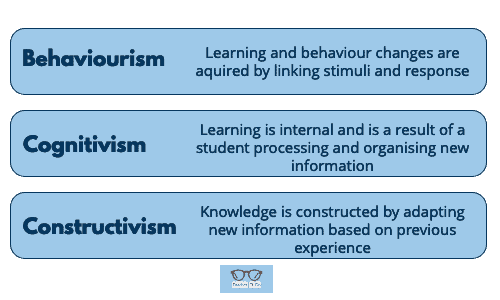
1. Piaget’s Theory of Cognitive Development
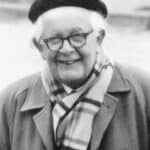
Piaget is an interesting character in Psychology. His theory of learning differs from many others in some important ways:
First, he focuses exclusively on children; Second, he talks about development (not learning per se) and Third, it’s a stage theory, not a linear progression theory. OK, so what’s he on about?
Well, there are some basic ideas to get your head around and some stages to understand too. The basic ideas are:
- Schemas : The building blocks of knowledge.
- Adaptation processes : These allow the transition from one stage to another. He called these: Equilibrium, Assimilation and Accommodation.
- Stages of Cognitive development : Sensorimotor; Preoperational; Concrete Operational; Formal Operational.
So here’s how it goes. Children develop Schemas of knowledge about the world. These are clusters of connected ideas about things in the real world that allow the child to respond accordingly.
When the child has developed a working Schema that can explain what they perceive in the world, that Schema is in a state of Equilibrium .
When the child uses the schema to deal with a new thing or situation, that Schema is in Assimilation and Accommodation happens when the existing Schema isn’t up to the job of explaining what’s going on and needs to be changed.
Once it’s changed, it returns to Equilibrium and life goes on. Learning is, therefore, a constant cycle of Assimilation; Accommodation; Equilibrium; Assimilation and so on…
All that goes through the 4 Stages of Cognitive Development , which are defined by age:
Piaget’s Stages of Cognitive Development
The Sensorimotor Stage runs from birth to 2 years and the child spends their time learning basic Schemas and Object Permanence (the idea that something still exists when you can’t see it).
The Preoperational Stage runs from 2 years to 7 years and the child develops more Schemas and the ability to think Symbolically (the idea that one thing can stand for another; words for example, or objects). At this point, children still struggle with Theory of Mind (Empathy) and can’t really get their head around the viewpoints of others.
The Concrete Operational Stage runs from 7 years to 11 years and this is the Stage when children start to work things out in their head rather than physically in the real world. They also develop the ability to Conserve (understand that something stays the same quantity even if it looks different).
The Formal Operational Stage runs from 11 years into adulthood and this is where abstract thought develops, as does logic and cool stuff like hypothesis testing.
According to Piaget, the whole process is active and requires the rediscovery and reconstructing of knowledge across the entire process of Stages.
Understanding the Stage a child is in informs what they should be presented with based on what they can and cannot do at the Stage they’re in.
Piaget’s work on cognitivism has given rise to some brilliant work from people like John Sweller who developed the fantastic Cognitive Load Theory and John Flavell’s work on metacognition
2. Vygotsky’s Theory of Learning
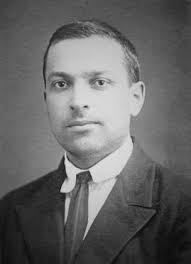
Vygotsky takes a different approach to Piaget’s idea that development precedes learning.
Instead, he reckons that social learning is an integral part of cognitive development and it is culture, not developmental Stage that underlies cognitive development. Because of that, he argues that learning varies across cultures rather than being a universal process driven by the kind of structures and processes put forward by Piaget.
Zone of Proximal Development
He makes a big deal of the idea of the Zone of Proximal Development in which children and those they are learning from co-construct knowledge. Therefore, the social environment in which children learn has a massive impact on how they think and what they think about.
They also differ in how they view language. For Piaget, thought drives language but for Vygotsky, language and thought become intertwined at about 3 years and become a sort of internal dialogue for understanding the world.
And where do they get that from? Their social environment of course, which contains all the cognitive/linguistic skills and tools to understand the world.
Vygotsky talks about Elementary Mental Functions , by which he means the basic cognitive processes of Attention, Sensation, Perception and Memory.
By using those basic tools in interactions with their sociocultural environment, children sort of improve them using whatever their culture provides to do so. In the case of Memory, for example, Western cultures tend towards note-taking, mind-maps or mnemonics whereas other cultures may use different Memory tools like storytelling.
In this way, a cultural variation of learning can be described quite nicely.
What are crucial in this learning theory are the ideas of Scaffolding, the Zone of Proximal Development ( ZPD ) and the More Knowledgeable Other ( MKO ). Here’s how all that works:
More Knowledgeable Other
The MKO can be (but doesn’t have to be) a person who literally knows more than the child. Working collaboratively, the child and the MKO operate in the ZPD, which is the bit of learning that the child can’t do on their own.
As the child develops, the ZPD gets bigger because they can do more on their own and the process of enlarging the ZPD is called Scaffolding .
Vygotsky Scaffolding
Knowing where that scaffold should be set is massively important and it’s the MKO’s job to do that so that the child can work independently AND learn collaboratively.
For Vygotsky, language is at the heart of all this because a) it’s the primary means by which the MKO and the child communicate ideas and b) internalizing it is enormously powerful in cementing understanding about the world.
That internalization of speech becomes Private Speech (the child’s “inner voice”) and is distinct from Social Speech , which occurs between people.
Over time, Social Speech becomes Private Speech and Hey Presto! That’s Learning because the child is now collaborating with themselves!
The bottom line here is that the richer the sociocultural environment, the more tools will be available to the child in the ZPD and the more Social Speech they will internalize as Private Speech. It doesn’t take a genius to work out, therefore, that the learning environment and interactions are everything.
Scaffolding is also an integral part of Rosenshine’s Principles of Instruction .
3. Bloom’s Domains of Learning
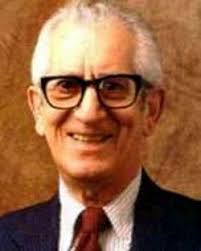
In 1956, American educational psychologist, Benjamin Bloom, first proposed three domains of learning; cognitive, affective and psycho-motor . Bloom worked in collaboration with David Krathwohl and Anne Harrow throughout the 1950s-70s on the three domains.
The Cognitive Domain (Bloom’s Taxonomy)
This was the first domain to be proposed in 1956 and it focuses on the idea that objectives that are related to cognition could be divided into subdivisions and ranked in order of cognitive difficulty.
These ranked subdivisions are what we commonly refer to as Bloom’s taxonomy . The original subdivisions are as follows (knowledge is the lowest with evaluation being the most cognitively difficult):
- Understanding
- Application
However, there was a major revision of the subdivisions in 2000-01 by Bloom’s original partner, David Krathwohl and his colleague, Lorin Anderson (Anderson was a former student of Bloom’s).
The highlights of this revision were switching names of the subdivisions from nouns to verbs, thus making them easier to use when curriculum and lesson planning .
The other main change was the order of the top two subdivisions was reversed. The updated taxonomy is as follows:
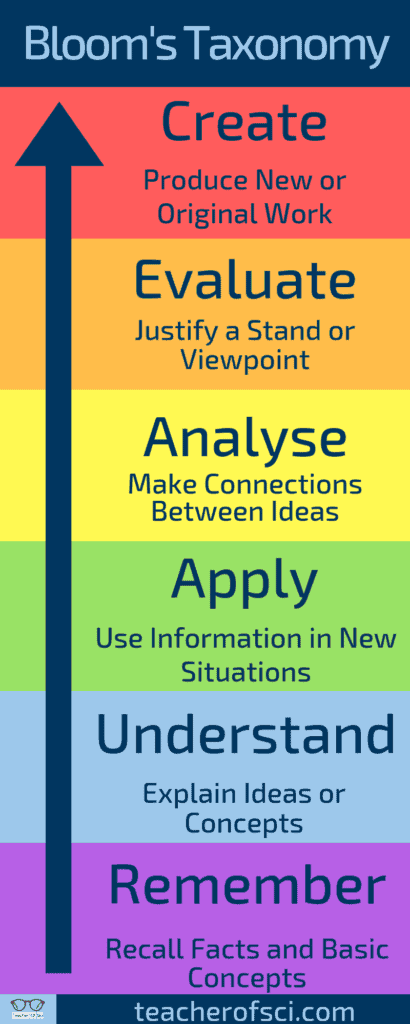
The Affective Domain
The affective domain (sometimes referred to as the feeling domain) is concerned with feelings and emotions and also divides objectives into hierarchical subcategories. It was proposed by Krathwohl and Bloom in 1964.
The affective domain is not usually used when planning for math and sciences as feelings and emotion are not relevant for those subjects. However, for educators of arts and language, the inclusion of the affective domain is imperative wherever possible.
The ranked domain subcategories range from “receiving” at the lower end up to “characterization” at the top. The full ranked list is as follows:
- Receiving. Being aware of an external stimulus (feel, sense, experience).
- Responding. Responding to the external stimulus (satisfaction, enjoyment, contribute)
- Valuing. Referring to the student’s belief or appropriation of worth (showing preference or respect).
- Organization. The conceptualizing and organizing of values (examine, clarify, integrate.)
- Characterization. The ability to practice and act on their values. (Review, conclude, judge).
The Psychomotor Domain
The psychomotor domain refers to those objectives that are specific to reflex actions interpretive movements and discreet physical functions.
A common misconception is that physical objectives that support cognitive learning fit the psycho-motor label, for example; dissecting a heart and then drawing it.
While these are physical (kinesthetic) actions, they are a vector for cognitive learning, not psycho-motor learning.
Psychomotor learning refers to how we use our bodies and senses to interact with the world around us, such as learning how to move our bodies in dance or gymnastics.
Anita Harrow classified different types of learning in the psycho-motor domain from those that are reflex to those that are more complex and require precise control.
- Reflex movements. These movements are those that we possess from birth or appear as we go through puberty. They are automatic, that is they do not require us to actively think about them e.g. breathing, opening and closing our pupils or shivering when cold.
- Fundamental movements. These are those actions that are the basic movements, running, jumping, walking etc and commonly form part of more complex actions such as playing a sport.
- Perceptual abilities. This set of abilities features those that allow us to sense the world around us and coordinate our movements in order to interact with our environment. They include visual, audio and tactile actions.
- Physical abilities. These abilities refer to those involved with strength, endurance, dexterity and flexibility etc.
- Skilled movements. Objectives set in this area are those that include movements learned for sport (twisting the body in high diving or trampolining), dance or playing a musical instrument (placing fingers on guitar strings to produce the correct note). It is these movements that we sometimes use the layman’s term “muscle memory”.
- Non-discursive communication. Meaning communication without writing, non-discursive communication refers to physical actions such as facial expressions, posture and gestures.
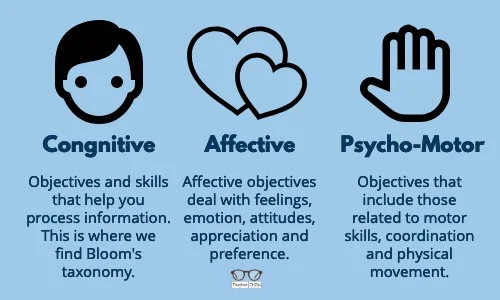
4. Gagné’s Conditions of Learning
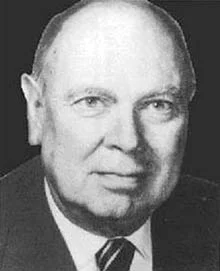
Robert Mills Gagné was an American educational psychologist who, in 1965 published his book “The Conditions of Learning”. In it, he discusses the analysis of learning objectives and how the different classes of objective require specific teaching methods.
He called these his 5 conditions of learning, all of which fall under the cognitive, affective and psycho-motor domains discussed earlier.
Gagné’s 5 Conditions of Learning
- Verbal information (Cognitive domain)
- Intellectual skills (Cognitive domain)
- Cognitive strategies (Cognitive domain)
- Motor skills (Psycho-Motor domain)
- Attitudes (Affective domain)
Gagné’s 9 Levels of Learning
To achieve his five conditions of learning, Gagné believed that learning would take place when students progress through nine levels of learning and that any teaching session should include a sequence of events through all nine levels. The idea was that the nine levels of learning activate the five conditions of learning and thus, learning will be achieved.
- Gain attention.
- Inform students of the objective.
- Stimulate recall of prior learning.
- Present the content.
- Provide learning guidance.
- Elicit performance (practice).
- Provide feedback.
- Assess performance.
- Enhance retention and transfer to the job.
Benefits of Gagné’s Theory
Used in conjunction with Bloom’s taxonomy, Gagné’s nine levels of learning provide a framework that teachers can use to plan lessons and topics. Bloom provides the ability to set objectives that are differentiated and Gagné gives a scaffold to build your lesson on.
5. Jerome Bruner
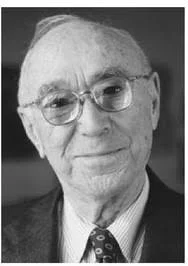
Bruner’s Spiral Curriculum (1960)
Cognitive learning theorist, Jerome Bruner based the spiral curriculum on his idea that “ We begin with the hypothesis that any subject can be taught in some intellectually honest form to any child at any stage of development” .
In other words, he meant that even very complex topics can be taught to young children if structured and presented in the right way. The spiral curriculum is based on three key ideas.
- Students revisit the same topic multiple times throughout their school career. This reinforces the learning each time they return to the subject.
- The complexity of the topic increases each time a student revisits it. This allows progression through the subject matter as the child’s cognitive ability develops with age.
- When a student returns to a topic, new ideas are linked with ones they have previously learned. The student’s familiarity with the keywords and ideas enables them to grasp the more difficult elements of the topic in a stronger way.
Bruner’s 3 Modes of Representation (1966)
Following the idea of the spiral curriculum, Bruner presented the idea of three modes of representation. These modes of representation refer to the way knowledge is stored in memory. Unlike Piaget’s age-related stages, Bruner’s modes are loosely sequential.
- Enactive (age 0-1 years). Representation of knowledge through physical actions.
- Iconic (age 1-6 years). Visual representation of knowledge stored via visual images.
- Symbolic (age 7+ years). The use of words and symbols to describe experiences.
6. Maslow’s Hierarchy of Needs
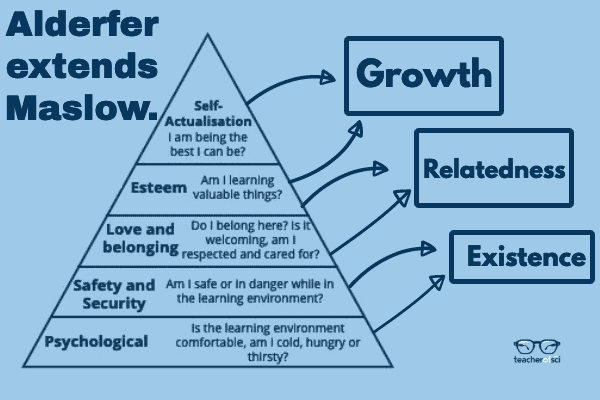
The basic premise for Maslow’s hierarchy of needs is that students progress through a set of sequential needs from physiological to self-actualization. As they move up through the levels, they feel more comfortable in their learning environment and have the confidence to push further.
It’s important to note that any group of students will have learners at different levels, some may not have the lower levels met at home so making sure these students feel safe and secure is of the utmost importance as they will find it very hard to move to the upper levels.
Maslow’s theory lends itself more to building student/teacher relationships rather than lesson or curriculum structure. You can have the best resources and most tightly planned lessons in the world but if you don’t show enthusiasm, passion and empathy it will be very difficult for your students to feel their needs have been met .
Further reading: simplypsychology.org
7. Howard Gardner’s Multiple Intelligences
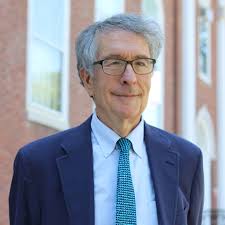
Howard Gardner is an American developmental psychologist and professor of cognition and education at the Harvard graduate school at Harvard University. He studied under Erik Ericson (Below) and Jerome Bruner (above).
He published “Frames of Mind” in 1983, in it, he laid out his theory of “multiple intelligences”.
Gardner perceived intelligence as the ability to solve problems or make products that are useful in one or more cultural settings.
He developed a list of criteria he would use to judge possible contenders for the title “intelligence”. Candidates had to satisfy a range of the conditions on his list and also be able to solve genuine problems of difficulties. Initially, Gardner named seven intelligences.
Gardner’s 7 Intelligences
- Linguistic intelligence. The ability to learn and use language in written and spoken forms to express oneself.
- Mathematical intelligence. The ability to solve problems logically, to solve mathematical problems and to perform scientific investigations.
- Musical intelligence. Having skill in appreciation, composition and performance of musical patterns, including the ability to recognize tone, pitch and rhythm.
- Bodily-kinesthetic intelligence. Using mental abilities to coordinate body movements to solve problems.
- Spatial intelligence. Being able to recognize and use patterns in a wide or confined space.
- Interpersonal intelligence. The capacity to understand the desires, motivations and intentions of other people.
- Intrapersonal intelligence. The capacity to understand your own fears, feelings and motivations.
The Importance of Multiple Intelligence in the Classroom
Gardner suggested that the intelligences rarely operate independently and compliment each other as students learn new skills and solve problems. He also commented that the intelligences are amoral, meaning they can be used for constructive or destructive purposes.
Whilst Gardner’s theory hasn’t been hugely accepted in the field of Psychology, it has had a strong positive response in education , especially in the US.
In the face of criticism that it is hard to teach things in the frame of a certain intelligence, Gardner replied by stating that the seven intelligences give 7 ways to teach a subject, allowing multiple strategies to be used, thus allowing all students to make progress.
Gardner believes that all seven intelligences are required to live life well and education systems should include all seven not just the more academic first two.
Naturalist Intelligence
Since its original publication, Gardner has since added an eighth intelligence; Naturalist intelligence. This deals with an individual’s ability to perceive, recognize and order features from the environment.
8. Erikson’s 8 Stages of Psychological Development
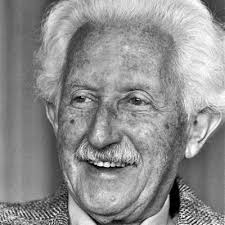
Erik Erikson was a stage theorist who developed Freud’s “Psychosexual Theory” and adapted it into a psychosocial (having both psychological and social aspects) theory encompassing eight stages.
According to Erikson, we experience eight stages of development during our life span. Within each stage, there is a dilemma that we must resolve in order to feel a sense of competence and will allow us to develop as a well-adjusted adult.
Erikson’s 8 Stages
- Trust Vs. Mistrust (Age 0 – 1.5). In this first stage, infants must learn that adults can be trusted. If treated poorly children may grow up feeling mistrust towards people.
- Autonomy Vs. Shame (Age 1.5 – 3). The “me do it’ stage, children start to make decisions and show preferences of elements in their environment such as what clothes to wear or what toy they prefer. If children are not allowed to explore these preferences they may develop low self-esteem and shame.
- Initiative Vs. Guilt (Age 3 – 5) . This stage involves children learning to plan and achieve goals involving others. If parents or teachers allow children to explore this and support their choices they will develop a sense of purpose and strong self-confidence.
- Industry Vs. Inferiority (Age 5 – 12). In this stage, children start comparing themselves with their peers. Success at this will result in a sense of accomplishment in their school work, social and family activities and sports.
- Identity Vs. Role Confusion (Age 12 – 18). Students in this stage are asking themselves “Who am I” and “What do I want to do in my life”. They will try out multiple roles during this time to find what one “fits” best. A strong sense of identity and an ability to defend their core beliefs in the face of other opinions would be considered success at this stage.
- Intimacy Vs. Isolation (Age 18 – 40). As students progress into early adulthood their focus shifts to making and maintaining strong, intimate relationships with others.
- Generativity Vs. Stagnation (Age 40 – 65). In middle adulthood, people are concerned with contributing to society either through their work or parenthood. Continued self-improvement for the benefit of other people figures strongly here.
- Ego Integrity Vs. Despair (Age 65+). Those in late adulthood reflect on their lives, feeling a sense of satisfaction or failure. Those who feel failure will often obsess with ideas of what they “should have” or “could have” done.
Educational Implications of Erikson’s Theory of Psychosocial Development
Within an educational frame, Erikson’s work gives us as teachers a framework to base our teaching on. Knowing what questions our students are asking of themselves and the world around them allows us to plan effectively.
Problems arise when our class has children at different stages in it, in this case, we must carefully differentiate our pedagogy to allow supportive learning for all students.
9. Kolb’s Experiential Theory
Kolb’s experi e ntial learning cycle.
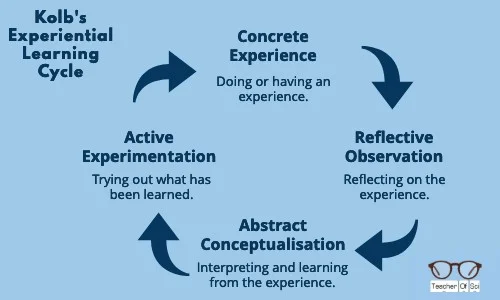
David Kolb, an American education theorist proposed his four-stage experiential learning theory in 1984. It is built on the premise that learning is the acquisition of abstract concepts which can then be applied to a range of scenarios.
“Learning is the process whereby knowledge is created through the transformation of experience” – Kolb, D. A. (1984). Experiential learning: Experience as the source of learning and development (Vol. 1). Englewood Cliffs, NJ: Prentice-Hall.
Each stage in the cycle both supports and leads into the next stage. Learning is achieved only if all four stages have been completed, however, a learner may travel around the cycle multiple times, further refining their understanding of the topic.
No one stage is an effective learning strategy on its own, for example, if the reflective observation stage is skipped, the learner could continue to make the same mistakes.
10. The Peter Principle
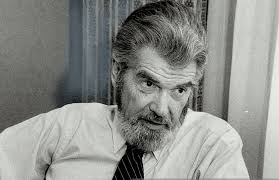
The Peter Principle was developed by American educational theorist Laurence Peter and was explained in the book “The Peter Principle” that Peter wrote with his colleague, Raymond Hull.
Originally the book was supposed to be a satirical view on how people are promoted in organizations but it became popular as it actually made a valid point.
Whilst not strictly a learning theory, it does have some crossover to the classroom. The Peter Principal deals with four levels of competence. They could give a teacher planning a long term teaching strategy a framework to use when thinking about how students progress.
- Unconscious Incompetence. Not knowing how to do a task without knowing you don’t know.
- Conscious Incompetence. You still don’t know how to do the task but now you know you don’t know. You are aware of a gap in your knowledge.
- Conscious Competence. You can now do the task but it requires a lot of concentration.
- Unconscious Competence. You can perform the task with ease. This is achieved by repeated practice.
I’m sure you can see how this would translate to a student’s learning journey.
Further Reading: Peter, L. J., & Hull, R. (1969). The peter principle .
11. Laird’s Sensory Theory
In 1985 Dugan Laird stated in his book Approaches to Training and Development that learning occurs when the senses are stimulated.
He quoted research that found that 75% of an adult’s knowledge was obtained by seeing. 13% was through hearing, the remaining 12% was learned through touch, smell and taste combined.
Based on this research, providing visual prompts for students will enhance their learning. However, making your lessons a multi-sensual experience will enhance learning even further. It’s worth considering this when planning your lessons.
12. Skinner’s Behaviorist Theory
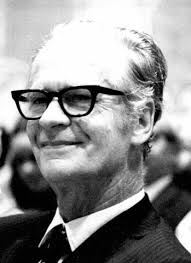
Operant Conditioning
Operant conditioning is based on Thorndike’s “Law of Effect” (1898), in which it is proposed that behaviors that are followed by positive responses are likely to be repeated and those that are followed by negative responses, not repeated.
Skinner refined the Law of Effect by introducing “reinforcement” into the descriptions. Using Skinner’s new description we end up with; those behaviors that are reinforced are repeated (strengthened) and those not reinforced tend to dissipate (are weakened).
Positive Reinforcement
From a classroom management perspective, positive reinforcement is an essential strategy for teaching students how to act and conduct themselves.
Positive reinforcement (e.g. praise) should be given for behaviors that are desirable, for example, verbally answering questions in class . Initially, this should be done for all answers given, regardless of whether they are correct. This will build a culture of answering questions.
As the behavior in question becomes commonplace, the teacher should then both reduce the frequency of the reinforcement and, as in our above example, only give it for correct answers.
Ultimately the teacher will reduce the frequency of the positive reinforcement to only those responses of the highest caliber. This will create a culture of desired excellence in the students.
13. Rogers’ Humanist Theory
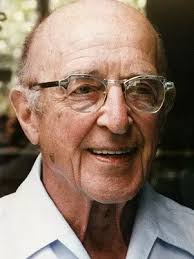
Developed by the American psychologist Carl Rogers in the 1980s, facilitative learning is a humanistic approach to learning.
Humanism was developed to contrast cognitivism and behaviorism. Both Rogers and Maslow (see above) based their work in humanism. The key perspectives of humanism are as follows:
- People have a natural desire to learn in order to achieve self-actualization (see Maslow’s theory above).
- It is not the outcome that is the most important part of education, it is the process of learning itself.
- The students themselves should be in control of their learning and it should be achieved through observing and exploring.
- The teacher should be an encouraging role model, motivating, guiding and supporting students on their own personal journey.
Facilitative Learning
Rogers’ views the teacher as a facilitator to learning rather than just a conveyor of knowledge. The success of the teacher is in their ability to build positive relationships with students.
Roger’s proposed three attitudinal core characteristics that a teacher should possess for facilitative learning to be successful:
- Realness. The teacher should be themselves and use their own personality when teaching. Being “real” with students breeds an ethos of trust between students and a teacher. The teacher should be able to convey their feelings rather than just being a monotonal, monochromatic robot.
- Prizing, Accepting and Trusting. A teacher should care about their students and accept their feelings, regardless of whether they assist or detract from learning. Through these characteristics, deeper trust and respect is built.
- Empathy. Understanding the student’s perception of learning and their feelings.
The effectiveness of facilitative learning also requires certain traits to be present in the student. They should be motivated , aware of the facilitative conditions they have been provided with and aware that the task they have been given is useful, realistic and relevant.
If all these characteristics are present then, in the words of Rogers himself:
“learning becomes life, and a very vital life at that. The student is on his way, sometimes excitedly, sometimes reluctantly, to becoming a learning, changing being”. – Rogers, Carl R. The Interpersonal Relationship in the Facilitation of Learning. In Humanizing Education: The Person in the Process. Ed. T. Leeper. National Education Association, Association for Supervision and Curriculum Development, p1-18. 1967.
14. Canter’s Theory of Assertive Discipline
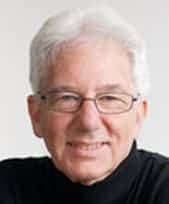
Assertive discipline is a structured system to enable teachers to manage their classrooms. It focuses on the teacher developing a positive behavior management strategy rather than being dictatorial.
Canter’s proposition is that the teacher has the right to decide what is best for their students and that no student should prevent any other from learning.
The teacher should very clear boundaries as to how they expect their students to behave and work, the students should know what these boundaries are and any deviation should be met with an assertive action from the teacher.
This all sounds quite draconian, right?
However, if the teacher gives a firm, clear instruction and those instructions are met, they should be followed by positive reinforcement (see Skinner above). Any deviation from the instruction should be met with negative consequences that the students have prior knowledge of.
The behavior management guru, Bill Rogers, bases his strategies on the assertive teacher model , which I know from personal use, works incredibly well.
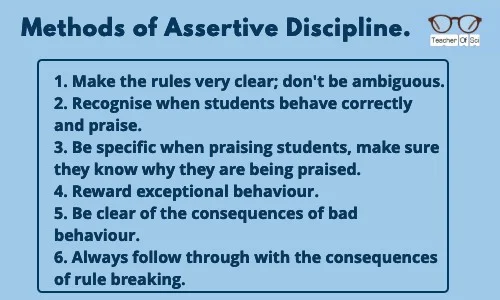
15. Dreikur’s Classroom Management Theory
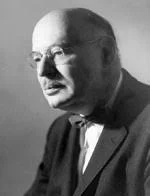
Rudolf Dreikur proposed the theory that mutual respect should be the basis for discipline and that this mutual respect motivates learners to display positive behaviors.
He believed students have an innate desire to feel like an accepted member of a group and to feel like they have value and confidence to contribute to that group. Dreikur called this desire to belong, the “genuine goal of social behavior”.
If students are unable to achieve this goal, they start a series of “goals of misbehavior”. The resulting misbehavior is a misguided attempt at gaining the sense of belonging they are missing.
Dreikur’s 4 Goals of Misbehavior
- Gain power and control.
- Gain revenge.
- Display feelings of inadequacy.
If a student fails to gain social status by gaining attention , they move on to trying to gain power and control, failure at each successive level ultimately ends with feelings of inadequacy.
How to Combat the 4 Goals of Misbehavior.
Gain Attention. Ignore the attention-seeking and use positive reinforcement when positive behavior is shown. Distract the student by offering alternate actions or choices e.g. “Please could you hand out the books”.
Gain Power and Control. Focus on all the good behavior in the class, while ignoring the attempt to gain power, on no account should you engage in a battle for power. Bill Rogers, the behavior expert, calls this the black dot, white square approach.
Gain Revenge. Remember that the student is trying to gain a sense of belonging and this revenge-seeking is a masked attempt to gain it. Away from other students, let the student know that you care about them and their education, that despite their actions you want the best for them.
Display Feelings of Inadequacy. At this stage, the student has given up on themselves. This stage will manifest in the form of “not doing” (not doing homework, not participating etc.). Students at this stage should be shown how to recognize small successes and achievements. Showing an interest in them and their work will always help slowly bring a student out of this stage.
Learning Theories Summary
I know what you’re thinking. “How the hell am I supposed to do all of these” or “which ones should I use” or “I’m more confused than ever!”.
That’s how I felt when I was doing my teacher training. The truth is, great teaching involves a cocktail of most of these at some point (and a few actual cocktails at the weekend to recover!).
If you are just starting out on your journey as a teacher and you are worried that you’ll do it wrong, just remember these basic principles:
- Building positive relationships with students is the bedrock of EVERYTHING.
- Setting clear boundaries that students are aware of.
- Consequences of breaking those boundaries are also known in advance.
- Focus on and reward the positive things that happen in your classroom (positive reinforcement).
- Treat your students as people with thoughts and feelings of their own that, while may seem irrelevant to you, they are not to them.
- It is easier and more effective to change your perspective to theirs than make them change to yours.
- Remember, their world is not the one you grew up in.
I hope you found this article useful, I know it reminded me of a good few things that I may have been slacking with. Feel free to share it with your teacher friends, I’m sure they will appreciate it.
Learning Theories FAQ
Behaviorism involves repeated actions, verbal reinforcement and incentives to take part. It is great for establishing rules, especially for behavior management . Behaviorism is based on the idea that knowledge is independent and on the exterior of the learner. In a behaviorist’s mind, the learner is a blank slate that should be provided with the information to be learnt. Through this interaction, new associations are made and thus leaning occurs. Learning is achieved when the provided stimulus changes behavior.
In contrast to behaviorism, cognitivism focuses on the idea that students process information they receive rather than just responding to a stimulus, as with behaviorism. There is still a behavior change evident, but this is in response to thinking and processing information. In cognitive load theory , learning occurs when the student reorganizes information, either by finding new explanations or adapting old ones.
Constructivism is based on the premise that we construct learning new ideas based on our own prior knowledge and experiences. Learning, therefore, is unique to the individual learner. Students adapt their models of understanding either by reflecting on prior theories or resolving misconceptions. Students need to have a prior base of knowledge for constructivist approaches to be effective. Bruner’s spiral curriculum is a great example of constructivism in action.
Similar Posts:
- Discover Your Learning Style – Comprehensive Guide on Different Learning Styles
- Service Learning: A Complete Guide
- Developing a Student-centered Classroom
8 thoughts on “15 Learning Theories in Education (A Complete Summary)”
What a great overview! Thank you
Is there a new paradigm of AI-assisted education? Everybody uses this kind of education both in learning and teaching, yet there is not a universal theory of such that subject.
Wow..indeed a phenomenal explanation of various learning theories Thank you.
Thank you very much for this article. I’m in pre-major classes for my K-5 degree & licensure, and I’m developing my POE. This might be the most helpful resource I have found so far.
Thanks a lot.
This article is very helpful; it summarizes almost all the theories I encountered during my PGDE. In addition, although in summary, it clarifies many unclear terms I came across during my training.
You do such a great job of summarising the theories. Thank you for this! It can be overwhelming as a new teacher to get all these theories and get the cocktail that fits best to own’s teaching style. Also, thank you for simplifying and creating light moments about the theories. The seven principles are practical and applicable in any teaching situation.
You are awesome!
Thank you for this wonderful overview of the theories by these developmental greats. Summarized beautifully for easy reading and a very useful refresher. It is a most helpful reference for my studies.
Extremely well written. Covers all the theorists. Read and absorb Dr. B.
Leave a Comment Cancel reply
Save my name and email in this browser for the next time I comment.
- Four Models of Adult Education
- You are here:
Engaging Experience and Wisdom in a Postmodern Age
By Ken Pawlak and William Bergquist
For many years, it was assumed that mature men and women would either have already engaged in education beyond the secondary level (college, university, professional certification programs) or had decided not to do so at an early age. Certainly the second half of the 20th Century witnessed the emergence of the adult learner who did engage in postsecondary education after the traditional college age (18-26 years of age). Unfortunately, in most instances, these postsecondary education experiences were not very fulfilling in that they were still designed around the set of assumptions (pedagogy) associated with meeting the purported postsecondary educational needs of young men and women.
Beginning with the growing interest in continuing education programs for mature adults, and expanding to the creation of undergraduate and graduate programs they prepared mature adults for second and third careers. These programs were often offered in management or other business related-fields (in part because the tuition for these programs was often reimbursed by the corporation in which the mature student worked). Many other programs were offered in professions, such as nursing and psychology, that were open to mature practitioners and required a specific advanced degree as a prequalification for certification or licensing.
Andragogic Education
With these new programs came a revision of the traditional (pedagogical) models of postsecondary education. There was now a new model—called andragogy—that was championed by such stalwarts of continuing and adult education as Malcolm Knowles (Knowles, 1980; Knowles and Associates, 1984) and Patricia Cross (1981). It stressed the unique and challenging needs of the mature learner for a different kind of educational experience that was more engaging, more flexible and, in particular, more appreciative of the existing knowledge base and experience of the mature learning. As a colleague of ours, Elinor Greenberg, noted many years ago, the adult learner is likely to be “experience rich, but theory poor,” whereas the younger postsecondary learner is likely (at least when they graduate) to be “theory rich, but experience poor.”
We propose that the andragogic model of education has been and often still is very appropriate for the mid-career adult learner. We commend this important step away from traditional pedagogical approaches to postsecondary education. We further propose, however, that there are shortcomings regarding not just the pedagogic model, but also of the andragogic model. Neither model fully succeeds in meeting the needs of many adults, who enter postsecondary institutions with not only rich experiences, but also rich (if often implicitly held) theories about the world and their role in it. We propose that a third and fourth model of adult education exist and can further enhance the continuum of need that has developed for today’s adult learners.
Transformative Education
The third model is based on the assumption that mature adults, like younger men and women, go through major transformations in their life. As Frederick Hudson (1991) has so effectively illustrated, adult development is not a linear or even curvilinear pathway from less complex to more complex development; rather, it is a series of life cycles, with mature adults and individuals repeatedly moving through profound transformations. These transformations can be precipitated or at least energized by life’s blessings (marriage, birth of child, career advancement, etc.) as well as life’s vicissitudes (major illness, death of a spouse, loss of job). Transformations can also be engaged in a more intentional manner, through the introduction of powerful, transformative learning experiences. This is the third model of adult education.
Appreciative Education
The fourth model begins with the assumption that the mature learner is a person with as much experience, wisdom and insight as the person serving in the role of “teacher,” “professor,” or “facilitator.” or “transformer.” The role played by the instructor or teacher in relation to that of the student is not based on the relative deficit of knowledge, skill and experience. The mature learner may actually be an expert in the field being studied. While the first three models of adult education are all based on a set of deficit assumptions, Model Four is profoundly appreciative in nature—focusing on assets rather than deficits.
Model One (Pedagogy) assumes that the learner (often young) needs to acquire certain knowledge or master certain skills in order to become a successful citizen, employee, professional, spouse, parent, etc. In essence, the Model One learner is an empty (or near empty) mug into which knowledge or skills are poured by an instructor with superior knowledge, skills or experience. The second model (Andragogy) is also deficit-based. While the mature adult enters an educational program with substantial experience (one or more mugs that are already full), there is still the need for additional education or training. There is an awaiting mug that is not yet full, but needs to be full (or at least partially filled) so that this mature learner can prepare for a new role in life or for successful advancement in his or her current career.
Even Model Three (Transformation) is essentially based on a deficit perspective. Someone (the transformer) creates conditions for the transformation to occur. Without this assistance, the transformation is less likely to occur. Furthermore, it is assumed that the transformation is a good thing: it will enable the mature learner to be wiser, more compassionate, more thoughtful, more socially intelligent, etc. We are “born again” as transformative learners so that our new self can be even better than the old self.
Model Four (Appreciation) focuses not on new learning or growth—instead on appreciating and giving voice to the wisdom (insights, knowledge, skills) that one already possesses. Furthermore, this wisdom is uncovered and appreciated within a specific context that is co-created by the “student” and “tutor” or within a cohort of learners.
Conclusions
We propose that as our society becomes more complex, unpredictable and turbulent (the postmodern condition) and as our population becomes older on average (the “graying” of society), it is likely that the third and fourth models of adult education will become more important, more often engaged and in need of further refinement. We consider this document to be nothing more than a first, primitive step toward the establishment of a four-model template of adult education.
- 20th and 21st Century Education
- The Learning Challenge
- Model One: The Nature of Pedagogical Learning
- Model Two: The Nature of Andragogic Learning
- Model Three: The Nature of Transformational Learning
- Model Four: The Nature of Appreciative Learning
- Postmodernism and the Challenges Facing 21st Century Educators
- Components of PSP’s Mission
- Desired Learning Outcomes
- Preamble to Charter
- Strategies for Engaging the PSP Mission
- The PSP Mission
- 21st Century Leadership
- Degree Granting Authority
- Statement by the President
- The PSP Advantage
- Careers in Psychology
- The Edge of Knowledge: PSP’s Research Center
- Institute for Public Policy and Psychology
- VUCA-Plus Concepts and Tools
- Ash Point Publishing
- The Professional Psychology General Store
- CPOA Order Sheet
- The Administrative Staff at PSP
- Members of the PSP Global Community
- Transcripts
- The Psychology Book Store
- Center for Personal and Organizational Assessment
- Library of Professional Psychology
- PSP Bulletin Board
Share this content
Models of Instruction Student-centered learning can help them succeed
Reforming the legacy approach to instruction puts students on a path to uplift themselves.
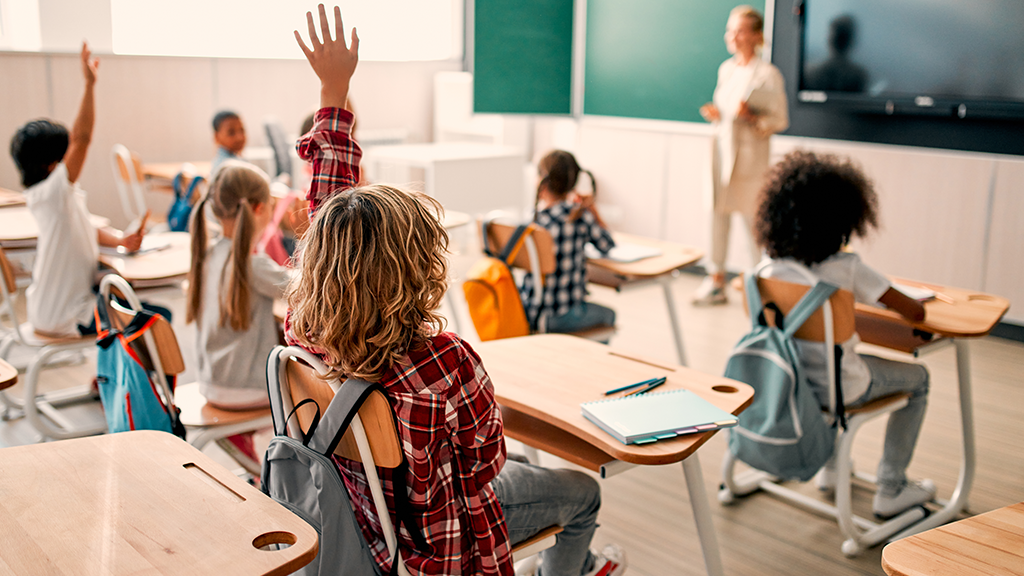
PHOTO CREDIT: VASYL/STOCK.ADOBE.COM
As school districts deal with the aftermath of the pandemic, this time of disruption gives us the opportunity to change the way students learn and achieve in the classroom learning environment. We can ultimately improve life chances for learners who have been marginalized.
Rethinking the teaching-learning process in classrooms is even more urgent given the pandemic impacts on achievement. Recently, the 2022 National Assessment of Educational Progress (NAEP) Long-Term Trend results for 9-year-olds revealed the largest average decline in reading scores since 1990, and the first score decline in mathematics since 1973. The report emphasizes that academic regression was magnified for students experiencing poverty and for Black and brown students.
Many education leaders understandably want to get back to where we were in 2019, but the opportunity and achievement gaps were still prevalent then. Instead, reimagining the teaching-learning process could be a powerful way to move forward with accelerated learning for all students.
School boards, superintendents, and district leaders can consider an overlooked but very powerful lever for academic equity: overhauling your model of instruction.
What is a model of instruction?
A model of instruction used to be defined as a framework for the way teachers plan lessons with identified instructional strategies that the teacher uses to deliver the lesson. What this definition lacked was a focus on the student’s role in the classroom learning environment, so the default model of instruction has always created a teacher-centered environment.
Teacher-centered instruction tends to result in passive and compliant students. Teachers are working too hard, and the students are not working hard enough and lack motivation to engage more robustly in their own learning. Research by Linda Darling-Hammond, among others, confirms that schools serving students from working class and working poor families and students of color are more likely to have an “increased emphasis on test-based, rote instruction.” The traditional teacher-centered model of instruction is nearly always coupled with low rigor and low student agency learning environments.
Research by Diane Friedlaender and colleagues has found that marginalized students are “more than likely to attend segregated schools with narrow and impoverished curriculum” that focuses on direct instruction in basic skills rather than the more advanced and enriched skills and knowledge that students must develop to be successful in today’s professional workforce.
The Applied Research Center within Instructional Empowerment is redefining the model of instruction to the following: a framework for the way a teacher plans lessons with identified strategies that the teacher and students use to achieve the learning target. This results in an intentional student-centered learning environment.
This is a unique definition, because models of instruction usually are defined by how the teacher is structuring and delivering the lesson, rather than by how the students are engaged in learning the lesson learning targets. In most models of instruction, even if student engagement is part of the teacher’s structure, the student’s role is controlled by the teacher.
One of the most important things to understand about a model of instruction is that it often is undefined and has unintentional effects. Most school districts do not have explicit models of instruction, which results in a “default” or legacy model prevailing. That default model is nearly always teacher centered. Most districts are operating within this default model of instruction without realizing that it is the root cause of many historical disparities for Black and brown students and students from low socioeconomic backgrounds.
Historical disparities and traditional approaches
Persistent disparities in academic achievement for Black and brown students and students from low socioeconomic backgrounds existed before the pandemic, though these gaps were exposed and exacerbated by the pandemic. Simply trying to reverse COVID learning loss and get back to pre-pandemic levels of achievement isn’t enough.
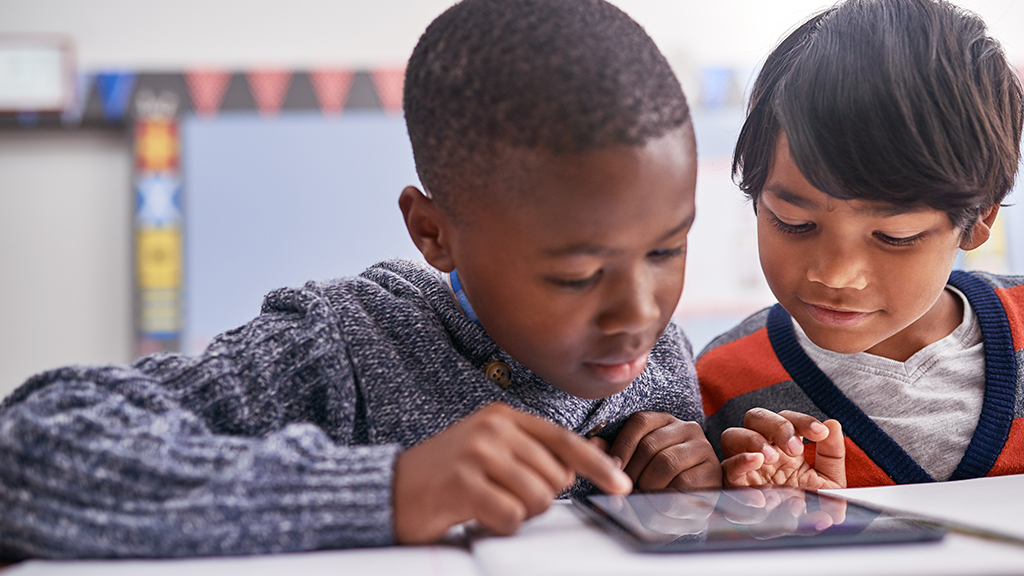
PHOTO CREDIT: PEOPLEIMAGES.COM/STOCK.ADOBE.COM
Data from the main NAEP assessments shows that the gap between the number of proficient white students versus proficient Black students has essentially held steady from 2011 to 2019. NAEP Proficient is defined as students demonstrating solid academic performance and competency over challenging subject matter. There was a 30-percentage-point gap between white and Black students for eighth-grade mathematics in 2011, and it was the same in 2019 (13 percent of Black students proficient vs. 43 percent of white students).
Many school districts implement or are increasing investments in programs such as multi-tiered systems of support (MTSS) or response to intervention (RTI) to narrow achievement gaps. But these traditional methods of remediation alone haven’t shown evidence of the level of effectiveness necessary to close the achievement gaps in 2019 and before. Such limited efforts are unlikely to reverse the magnitude of learning loss resulting from the pandemic. In fact, Rekha Balu and her colleagues found in 2015 that RTI had a more negative impact on schools than it had a positive impact.
The problem with relying on MTSS and RTI to provide the major lift in closing achievement gaps is that these programs—and others like them—are treating the symptoms instead of the root cause. They are not changing the heart of the problem: a legacy model of instruction that is perpetuating historic disparities. Programs like MTSS and RTI are beneficial in conjunction with redesigning your model of instruction, but alone they aren’t enough.
Instruction vs. instructional empowerment
The legacy model of instruction is what we are all familiar with from our own experiences in school: The teacher lectures, students listen passively, and students complete independent practice assignments such as worksheets. The student’s role is to follow instructions as the teacher directs the learning process, and as a result students become dependent and compliant learners.
A model of instructional empowerment looks much different. Students have an active role in their own learning process, collaborate with peers, and thrive as independent critical thinkers. In this type of classroom, students experience agency (the ability to self-manage themselves and their learning) as they work on challenging academic tasks, which results in productive struggle.
Productive struggle is defined as: “Students grapple with and solve a question or problem that is just beyond their current level of understanding and that requires them to examine multiple avenues of thought. Students wrestle with ideas yet persevere and come up with solutions themselves.”
Productive struggle leads to deeper engagement as students discover new understanding instead of passively receiving information from the teacher. Teachers design challenging tasks and then step back and release students to structures within the model of instructional empowerment. Students develop agency by relying on their resources and peers instead of being dependent on the teacher, and they build the capacity to access levels of academic rigor that they may never have experienced before. As students begin to believe in themselves, they invest their discretionary effort into their learning.
As students develop agency and other life skills such as decision-making, problem-solving, and effective communication, they increase their chances of succeeding beyond school and achieving upward mobility. Reforming your model of instruction is essential for academic equity. The legacy model of instruction perpetuates the status quo, while the model of instructional empowerment makes it possible to advantage students who have been historically marginalized. Students from all backgrounds benefit from a more enriched learning experience where students are actively engaged in teams and challenged to create, innovate, and debate.
Case Study: Lakewood Elementary School
Schools and districts that implement the model of instructional empowerment have experienced major gains in student achievement. For example, my research center partnered with Lakewood Elementary School in St. Petersburg, Florida, which was the lowest-performing traditional public school in the state in 2018 with an “F” grade. Lakewood serves a marginalized demographic, with 100 percent of its students receiving free and reduced meals and 15 percent homeless or in foster care.
After three years of implementing the model of instructional empowerment—from 2019 to 2021, through the pandemic and all the challenges of virtual and blended learning—Lakewood rose to an “A” grade and was among the top 6 percent of all traditional public elementary schools in the state.
While many schools experienced learning losses during the pandemic, Lakewood experienced learning gains as its students engaged in academically rigorous work and developed student agency. Instead of trying to get back to its 2019 scores, Lakewood accelerated its achievement far beyond that through the model of instructional empowerment. Lakewood outperformed its district’s average in the 2020-21 school year and increased its learning rates in math and reading during COVID. The other schools in the district, which weren’t implementing the model of instructional empowerment, experienced decreased learning rates.
Lakewood’s improvement didn’t happen overnight. It was a multiyear process, as all sustainable school improvement efforts must be. It involved an intense partnership with our research center that helped propel the school through the pandemic with a clear focus on rigor and agency in core instruction. Implementing a completely new model of instruction isn’t easy work, but it was the right work, and it changed students’ lives.
As one first-grade teacher said in a research interview, “We have kids whose older siblings never had the opportunity to take honors classes, and their parents may not have gone to college. Now, so many of our students can get on the honors track as they enter middle school because of their own efforts and results on the statewide test. It’s so amazing. So many doors are opening for our students.”
The biggest takeaway from Lakewood’s story is that school boards, superintendents, and other district leaders must ensure that their district’s model of instruction is explicitly laying out the type of pedagogy that will accelerate learning with academic rigor and student agency. Traditional teacher-centered instruction and traditional solutions like RTI and MTSS haven’t been able to get all students where they need to be. If the model of instruction is not clear, then the default will be the legacy model where students who are the most vulnerable and marginalized will not have the opportunity to thrive. When you are clear and consistent with implementing the model of instructional empowerment, you’ll put students on a path to lift themselves up.
Michael D. Toth ([email protected]) is founder and CEO of Instructional Empowerment ( www.instructionalempowerment.com ) and leads IE’s Applied Research Center.

Around NSBA

2023 Magna Awards Grand Prize Winners
School districts rethink and reinvent education for their students, staff, and communities.

Reinventing Schools: The Technology is Now! (1995)
Chapter: a new model for education.
Below is the uncorrected machine-read text of this chapter, intended to provide our own search engines and external engines with highly rich, chapter-representative searchable text of each book. Because it is UNCORRECTED material, please consider the following text as a useful but insufficient proxy for the authoritative book pages.
Schools tendto students sat in neat rows with the teacher in front. Schools sought to be an efficient âIn the information age, the reflect the societies social institution that could turn out iden- human beings that industry tical products. Students learned enough in whichtheyareem- to work at jobs that they would probably needs are those who can do keep for much of their lives. bedded. In America before their own thinking, get Today many students still attend factory the Civil War, little book learning actively involved, work in -model schools. Much of the day is spent was needed to manage what was passively listening to lectures. Many classes teams, and be innovative, for most people still an agrarian life. teach skills for jobs that either no longer not merely industrious. The School started relatively late in the day exist or will not exist in their present form problem is, the factory and ended early to leave time for chores. when students grow up. In summer, school let out entirely so It is clear that yesterdayâs innovation model school, which doesnât children could help their parents in the has become todayâs obstacle to change. encourage those qualities, is fields. Education was narrow in scope, Only about 20 percent of the employed still with us and needs to be controlled largely by the teacher, and population now works in factories or on focused predominantly on basic skills. farms. People graduating from high replaced with a new kind of In that world, the model of education school or college will average six to eight schooling that does.â embodied in the one-room schoolhouse jobs over the course of a career, many of âBILL BLAKEMORE , ABC N EWS was sufficient. Teachers taught reading, them requiring skills that are unforeseen writing, and elementary mathematics to today. About half of all employed Ameri- complement the skills students learned cans work with informationâanalyzing outside school. Since relatively few stu- information that already exists, generating dents progressed even as far as high new information, storing and retrieving school, the need for higher levels of edu- information. Soon a major portion of cation was minimal. this group will not even work in an office, By the end of the 19th century, more much less a factory, but at home. and more of the population was settling This postindustrial form of society in cities and going to work in factories. calls for a new, postindustrial form of edu- To teach students the basic skills and sim- cation. Teachers, parents, school adminis- ple facts they needed for industrial jobs, trators, and policymakers have begun to the first great revolution in schooling took place: the factory school model appeared. Large build- ings enclosed labyrinths of class- rooms where A NEW MODEL 12 FOR EDUCATION WORK IN AMERICA: 195 Years 100 The rapid industrializa- ries, treating students Agricultural tion of 19th-century as products to be 75 America caused an shaped with assembly PERCENT OF WORKFORCE analogous transform- line precision. Though Industrial ation in American this model of education education, which previ- has proven effective 50 ously had been charac- at teaching basic skills terized by the one-room to students, it is not Service schoolhouse. By the suited to a society in 25 beginning of the 20th which individual suc- century, schools were cess often depends on Information increasingly mimicking a personâs ability to the practices of facto- adapt to change. 0 1800 1900 TODAY THE ONE-ROOM SCHOOLHOUSE
realize that an entirely new model of reshape education, ending the disjunction dents advance without restraint while education is needed. In this new kind of between school and the broader society. other students have the various resources school, all students will be held to far Technology offers unlimited new ways of they need to meet high standards. higher standards of learning because learning, of teaching, and of running Traditional schools have emphasized everyone will have to be prepared to think schools. It provides new ways individual performance and for a living and everyone will have to be for everyone involved in edu- competition and have dis- cation to be openly account- âTechnology is merely a tool capable of learning many new skills over couraged students from to help us improve the the course of a lifetime. This model of able to parents, to communi- working or even talking education will increase the links between ties, and to students. together. In the new model opportunities for learning students and their communities, bringing Yet technology by itself is of school, classroom experi- and help us really approach the resources of school to bear on the clearly not enough. As applied ences emphasize critical the kind of teaching that complex ethical, civic, and technical deci- in factory-model schools, tech- thinking, teamwork, com- sions that all citizens will have to make. nology can be as uninspiring promise, and communica- we think is important in The timing and location of education will as traditional mimeographed tionâthe skills valued in our schools.â be more flexible, to worksheets. Computers in todayâs workplace. schools have too often been âL INDA R OBERTS , D EPARTMENT reflect and take ad- This model of education âThe school reforms of the OF E DUCATION vantage of changes used for drills, for word pro- calls for changing the roles 1980s consisted mostly of in the workplace. cessing, and for remedial of students, teachers, and The distinction work. These applications fail schools. In the new model an added program here, between learning to take advantage of the rich, interactive of school, students assume many of the an improved strategy there, inside of school and capabilities of todayâs information tech- functions previously reserved for teachers. and a computer someplace outside of school nologies. In small groups, individual students act as will blur. Compare the use of computers for peer-tutors for others. Because they are else. These efforts were Technology is a drill and practice to their use as effective often the ones most familiar with new like taking aspirin for a key transforming learning machines. With imaginative, technologies, students lead by example, life-threatening illness.â element in creating inspiring software, students are not forced helping their classmates work through this new model of to come up with the one right answer; problems. In this way, students begin âKEITH GEIGER , NATIONAL school. Just as tech- rather, they learn to ask many questions learning from an early age how to com- EDUCATION ASSOCIATION nology is reshaping and to devise multiple approaches to a municate and how to assume greater other institutions, it problem. They learn at their own pace responsibility for their own education. has the potential to and in their own style, so that skilled stu- Teachers, in contrast, change from being the repository of all knowledge to being guides or mentors who help students navigate > âAs we look to the major sectors of our economy, the educational system is the only sector that has not brought technology to bear upon its operations. And in a society so rich with infor- mation, we can no longer rely on skills appropriate only for the industrial age.â âCONSTANCE A. MORELLA, U.S. R EPRESENTATIVE A ND FACTORY-MODEL SCHOOL MUST YIELD TO A THIRD MODEL OF EDUCATION...
through the information made available will cut across disciplines, combining the by technology and interactive communi- subject matter of previously separate class- âTechnology itself is not the cations. They help students gather and es. Multiple choice tests will be replaced curriculum. Technology is a organize information, judge its value, and by new kinds of assessments that measure decide how to present it to others. Moving the acquisition of higher-order skills. key that opens opportunities from group to group and from student to Schools may emerge in unlikely places for students to learn in the student, teachers help students stay focused âsuch as office classroom. It is a way in and working at the limits of their abilities. buildingsâor more âEducation is an enterprise When the class meets as a whole, teachers conventional schools which we can bridge what in distinguished by its share the responsibility for teaching with may have branch the past have been large the studentsâeach of whom has been campuses integrated paucity of technology, gorges that have separated forging ahead at his or her own pace. into businesses, hos- and obviously that In this new model of school, education pitals, or homes. Sec- students from opportunity.â situation must change.â looks different than it does in most ondary schools may âJOHN DOSSEY, schools today. Schools might be open all forge new links with âLUTHER WILLIAMS, ILLINOIS STATE UNIVERSITY day and all year, with groups of students two-year colleges and NATIONAL SCIENCE FOUNDATION rotating in and out of session. Classrooms community institu- might include stu- tions to ease the trans- dents of different ition from school to âIntegrating technology into ages. Traditional 50- [todayâs classrooms] makes minute classes will about as much sense as inte- stretch or disappear to accommodate grating the internal combus- activities made possi- tion engine into the horse.â ble by technology. âLEWIS PERELMAN , Longer-term projects DISCOVERY INSTITUTE The use of technolo- gy in classroomsâ whether in the con- text of virtual reality devices (top), coop- erative learning (center), or desktop video conferencing ETHNIC GROUPS (bottom)âplaces UNI COLL students at the S VE NT EGESITIES center of the educa- E R PAR S/ tional process. Both In the third model of teachers and the education, schools technology itself GOVERNMENTS LIBRARIES/ draw upon a rich web become tools that MUSEUMS S HOOL of interconnections students draw upon SC among societal institu- to advance their tions, with people and own learning. information from other sectors enriching and TIOIONS SER NS/ VIC enabling the missions AT EC A OCI LUB of schools. ASS RPOR S CO LABORATORIES ...A MODEL THAT COMBINES THE BEST OF PAST PRACTICES WITH THE RICH INTERACTIVITY O
F work. Individual classes will be integrated The elements of this new model of or more than 200 into workplaces, providing a vocational education are starting to appear in scat- years, from the education far richer and more useful tered communities across the United founding of the 13 than what is offered today. States. Schools are experi- Technologies used at home menting with new organiza- colonies in the âKids retain 5 percent of what tional structures, new forms will convey lesson plans, 1600s until well they hear and 10 percent of homework, and assessments of governance, and new after the Civil War, the both to students and to their uses of technology that are what they read but 80 per- parents. designed to reflect the nation's educational cent of what they do and 90 The ultimate goal of this constant flux of modern needs were largely met percent of what they teach.â society. This trend is about new model of education is to through the model of the foster communities of life- â R OBERT B ALLARD , W OODS H OLE to accelerate dramatically. long learners, where intellect As technology becomes one-room school. As the OCEANOGRAPHIC INSTITUTION and cooperation are highly more powerful and plenti- nation urbanized and indus- valued. Within these commu- ful, and as the needs of trialized in the latter part of nities, decisions will be society more urgently call made by those in the best position to for a new model of education, American the 1800s, today's factory make themâby students, teachers, and schools will be caught up by irresistible model of K-12 education educational administrators. forces of change. emerged. As the nation enters the next century, technology allows us to con- sider a new model of educa- tion, one that couples class- Using satellite room learning and resources video technology, to education resources students in a found quite literally through- Japanese class interact with an out the world. instructor and In the one-room school fellow students and in today's factory-model across the country. schools, the teacher is the heart of the education enter- prise. In the new model of education, the teacher will emerge as the mentor, guide, and broker to the world of knowledge made accessible by technology. Information technolo- works or CD-ROMs, gies foster new ways of groups of students can learning distinct from engage in cooperative the traditional model projects that teach of teachers in front of communication and classrooms lecturing negotiation skills as to rows of students. well as problem solving Students progress skills. Meanwhile, through curriculum teachers take on a new sequences keyed to role, that of advising local, state, and nation- and guiding students al standards. Using the through the wealth of information available material that the new from broadband net- technologies offer. OFFERED BY INFORMATION TECHNOLOGIES.
Today's children have grown up immersed in a world of computers and other information technologies. They play video games; they listen to music on digital compact disks; they help their families program the computerized controls of videocassette players. With all of the exciting innovations in computer technology, children have the opportunity to gain a wealth of knowledge without ever leaving home. Schools by comparison can seem dull.
Education reformers have been developing new approaches for improving the way in which children learn and interact in the classroom. They now must consider the "technology gap" that exists between the technologically rich experiences children have outside the classroom and the comparatively low-tech, in-school environment. The aim is not just to outfit more classrooms with computers. Schools should be changed so that they encompass and guide out-of-school activities that already embrace technology.
Not only is this vision possible, it also is feasible, according to Reinventing Schools . This document, available only as an on-line publication, is based on a meeting at which hundreds of leaders -from government, education, and the entertainment and information technology industries-developed strategies for reinvigorating the K-12 educational process by integrating the school experience with the information technology that has captured children's imaginations.
Funding for the project was provided by the National Science Foundation, National Aeronautics and Space Administration, Academy Industry Program of the National Research Council, Coca-Cola Endowment Fund of the National Research Council, and Kellogg Endowment Fund of the National Academy of Sciences and Institute of Medicine.
This is a web-only publication available at:
http://www.nap.edu/readingroom/books/techgap/welcome.html .
READ FREE ONLINE
Welcome to OpenBook!
You're looking at OpenBook, NAP.edu's online reading room since 1999. Based on feedback from you, our users, we've made some improvements that make it easier than ever to read thousands of publications on our website.
Do you want to take a quick tour of the OpenBook's features?
Show this book's table of contents , where you can jump to any chapter by name.
...or use these buttons to go back to the previous chapter or skip to the next one.
Jump up to the previous page or down to the next one. Also, you can type in a page number and press Enter to go directly to that page in the book.
To search the entire text of this book, type in your search term here and press Enter .
Share a link to this book page on your preferred social network or via email.
View our suggested citation for this chapter.
Ready to take your reading offline? Click here to buy this book in print or download it as a free PDF, if available.
Get Email Updates
Do you enjoy reading reports from the Academies online for free ? Sign up for email notifications and we'll let you know about new publications in your areas of interest when they're released.

- Aug 21, 2023
Exploring Alternative Educational Models: What Parents Need to Know
Updated: Sep 15, 2023

Education is not a one-size-fits-all endeavor. As our understanding of learning and development evolves, so too does the landscape of educational options available to parents and students. In this article, we'll explore alternative educational models, providing parents with the knowledge they need to make informed decisions about their children's education.
Article Overview
Understanding Alternative Education
Exploring different models, montessori schools, waldorf/steiner schools, homeschooling and unschooling, classical schools, microschools and learning pods, hybrid schools (homeschool and microschool), other models, the benefits and challenges of alternative education.
Alternative education refers to teaching and learning approaches that are not from state-provided mainstream education. These models often feature innovative curricula and flexible programs tailored to individual student interests and needs. The landscape of alternative education is vast and varied, encompassing a broad range of philosophies and methodologies.
Historically, alternative models of education have coexisted with the public education system since its inception in the first half of the 19th century. These models have been developed by educators, parents, and students who sought alternatives to the state-provided education system for a variety of reasons. In fact, many of them are rooted in the values and methods parents have long used before the existence of public education.
In recent years, several teaching practices developed in alternative schools, such as student-centered and independent learning, project-based and cooperative learning, as well as authentic assessment, have influenced the culture of public education.
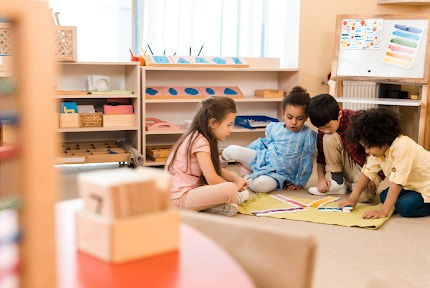
Montessori schools are based on the educational philosophy and methodology of Italian physician and educator Maria Montessori . These schools feature multi-age classrooms, student-chosen work in long time blocks, a collaborative environment with student mentors, absence of testing and grades, and individual and small group instruction in academic and social skills.
Montessori pedagogy views children as competent beings capable of self-directed learning. Learning is stimulated through a prepared

Waldorf schools , also known as Steiner schools, are based on the educational ideas of Austrian philosopher Rudolf Steiner . These schools aim to develop children and adolescents into free, moral, and integrated individuals by integrating practical, artistic, and intellectual approaches into the teaching of all subjects.
Waldorf education is based on seven-year developmental stages with particular perceptions of the learner. The learning environment in Waldorf schools often takes up organic shapes and forms, such as rounded walls, reflecting the broad range of creative and artistic approaches to learning.

Homeschooling is an alternative education model where parents or tutors educate children at home instead of sending them to traditional public or private schools. This model allows for a personalized learning experience and can be particularly beneficial for students who need a flexible schedule or a different learning environment. Parents choose the curriculum and craft a schedule that is geared more towards their child's individual needs. The pro-family nature of homeschooling is one of its strongest benefits for many people.
Unschooling , a subset of homeschooling, is a learner-centered approach that often involves community-based learning. Unschooling encourages exploration and learning through activities that interest the child, rather than following a structured curriculum.
Classical schools are educational institutions that follow the principles of classical education , a model rooted in the classical civilizations of Greece and Rome. These schools emphasize the pursuit of knowledge, wisdom, and virtue through the study of the liberal arts and the great books of Western civilization. The curriculum is divided into three stages, known as the Trivium : Grammar, Logic, and Rhetoric, each corresponding to specific developmental stages of a child's learning. Classical schools , which exist in various forms including private schools, charter schools, and homeschooling networks, offer a unique alternative to mainstream education, emphasizing critical thinking, eloquent expression, and the development of moral virtue.

Microschools and learning pods have emerged as innovative alternatives to traditional schooling, offering a midpoint between private schools and homeschooling. These forms of "permissionless education" can be seen as a reinvention of the one-room schoolhouse , creating personalized learning experiences tailored to the individual needs of students. Often started by dissatisfied parents or former educators, these schools rethink the way education should be delivered to students. While these schools gained popularity during the COVID-19 pandemic, they address the shortcomings of the current education system and offer a more personalized approach to learning.

Hybrid schools are gaining traction as a flexible and innovative alternative to traditional education models. These schools, which blend in-person instruction with home-based learning, offer a more personalized approach to education. Typically, students attend classes in a physical school for part of the week and learn at home for the remainder. This model provides a balance between structured learning and independent study, allowing students to take greater responsibility for their education. Hybrid schools have been particularly appealing to families seeking more affordable and flexible schooling options.
There are numerous other alternative education models, including democratic or free schools , which are organized around the principles of autonomy and democracy. There are also models like the Dalton Laboratory Plan, which enables students to work independently on the basis of a contract.
Alternative education models offer several benefits. Usually, they are smaller in scale and have less bureacracy. This leads to more flexibility and freedom to focus more closely on learners' needs. They often provide a more personalized learning experience, cater to different learning styles, and foster creativity and critical thinking. These models can also promote a love of learning by allowing students to explore their interests in depth.
However, alternative education also comes with challenges. For instance, some models may not follow the traditional grading system, which could pose issues when applying to colleges or universities. Additionally, these models may require a significant time commitment from parents, particularly in the case of homeschooling or unschooling. Funding can also be a challenge for innovative education models. However, both funding and higher education are becoming more accommodating as more families become interested in alternative education models.
Choosing the right educational model for your child is a personal decision that depends on your child's learning style, interests, and needs. By understanding the various alternative education models available, parents can make informed decisions that best support their child's learning journey.
Remember, the goal of education is not just to impart knowledge, but to ignite a lifelong love of learning. Whether you choose a traditional or alternative education model, the most important thing is to create a nurturing environment where your child feels supported and inspired to learn.
If you are in the Wichita area and are looking for different education options, we have a growing directory of innovative schools and educators in the area. We invite you to explore!
Recent Posts
The Microschool Movement in Wichita: Dalena Wallace's Inspiring Journey
Wichita's Pioneering Efforts in Microschools and Innovative Education
Empowering Innovation in Wichita's Educational Landscape
Comentários
A Survey of Knowledge Tracing: Models, Variants, and Applications
Ieee account.
- Change Username/Password
- Update Address
Purchase Details
- Payment Options
- Order History
- View Purchased Documents
Profile Information
- Communications Preferences
- Profession and Education
- Technical Interests
- US & Canada: +1 800 678 4333
- Worldwide: +1 732 981 0060
- Contact & Support
- About IEEE Xplore
- Accessibility
- Terms of Use
- Nondiscrimination Policy
- Privacy & Opting Out of Cookies
A not-for-profit organization, IEEE is the world's largest technical professional organization dedicated to advancing technology for the benefit of humanity. © Copyright 2024 IEEE - All rights reserved. Use of this web site signifies your agreement to the terms and conditions.
Stanford’s Code in Place introductory programming course offers a new model for large-scale interactive learning

What began as an online class on coding during the pandemic has morphed into an effective model for creating learning opportunities worldwide, outside of a formal classroom.
First launched in 2020 , the six-week Code in Place course teaches fundamentals from Stanford’s flagship introduction to Python programming course, CS106A. The unique course design facilitates instruction entirely online with six weeks of Stanford-led lectures, assignments, and smaller-group sections led by volunteer teachers. After repeat versions in 2021 and 2023 , Code in Place is back this spring for its fourth iteration.
Chris Piech , assistant professor of computer science at Stanford Engineering, co-created the project with colleague Mehran Sahami , professor and the Tencent Chair of the Computer Science Department. While Stanford professors teach the main lectures, volunteer teachers from across industries and geographies lead smaller sections, which have about 10 students each.
Piech believes this community-powered teaching and learning model can be open-sourced. His research on this type of course design has found that people who are teaching the material are better able to learn it and have more fun doing it than other approaches to learning. Foothill College, also in the San Francisco Bay Area, is now using the Code in Place platform to teach one of its courses.
This year, Code in Place lectures will be available in Spanish; there will be better error messages in the instruction to help guide students; and learners will get feedback on the style of their code – not just the accuracy. In addition to the usual guided instruction option, the course will also be offered in a self-guided format that can be done on one’s own schedule.
For section leader Sara Thomas, last year’s experience allowed her to teach a subject she previously learned herself as a college student in Canada. Thomas, a third-year double major in computer science and environmental science at the University of Toronto Scarborough, believes Code in Place is building a global community for people with similar interests where there is a safe space to ask questions and learn from others.
“A lot of times, especially in computer science, you can learn on your own,” Thomas said. “But it’s kind of hard to know what the solution is or if yours is good, and there’s probably a better way of doing it.”
So far, more than 30,000 learners have gone through Code in Place, which has had the support of about 3,000 section leaders. Discussion forums allow learners to ask questions 24/7 and peers all around the world can help answer.
Even as advances in artificial intelligence increasingly automate processes, Piech believes coding is still as relevant as ever because learners will gain a thinking framework that is also applicable to AI. That programming foundation could help one better use generative AI tools like ChatGPT, understand its ethics, or even program the next big AI technology, Piech explained.
“Curiosity has brought a lot of people to their first step into coding,” Piech said. “Once you take a couple steps, you realize there’s a sheer exhilaration turning something that’s just in your mind into something that you can visualize and share with your loved ones.”
Code in Place’s next guided session is April 22 through May 31. The course is free. Applications for volunteer section leaders are closed. Learner applications are due by Friday, April 12. The Code in Place course is made possible, in part, by the generous support of Carina Initiatives.
Related : Chris Piech , assistant professor of computer science
Related : Mehran Sahami , professor of computer science
Related Departments

The future of addiction

Stanford-led research shows how commercial rooftop solar power could bring affordable clean energy to low-income homes
- Technology & Society

Michael Genesereth is on a mission to bring logic education to high schools
- School News
How health systems and educators can work to close the talent gap
Every patient who engages with a health system has a team of healthcare workers supporting and administering care, whether in hospitals, clinics, ambulatory surgery centers, or other settings. Attracting enough qualified employees in nursing, allied health, and many other roles has posed a meaningful challenge for the healthcare sector since before the COVID-19 pandemic.
About the authors
This article is a collaborative effort by Brandon Carrus , Connor Essick, Martha Laboissiere , Meredith Lapointe, and Mhoire Murphy , representing views from McKinsey’s Healthcare Practice.
Resignations among healthcare workers have increased steadily from about 400,000 per month in 2020 to nearly 600,000 per month in May 2023. 1 “Job openings and labor turnover—July 2023,” US Bureau of Labor Statistics, accessed August 20, 2023. The vacancy rate—the difference between the number of job openings and hires—has also increased during this period, with about 710,000 vacant positions as of May 2023 (down from a high of more than a million in December 2022). 2 “Job openings and labor turnover—July 2023,” US Bureau of Labor Statistics, accessed August 20, 2023. Other factors compound the challenge, including workforce demographic shifts and changing care needs.
Attracting enough qualified employees in nursing, allied health, and many other roles has posed a meaningful challenge for the healthcare sector since before the COVID-19 pandemic.
Health systems could take a decade or more to make the adjustments needed to address some of these pressing workforce challenges. Moreover, reskilling and upskilling can help build workforce resilience and job security (for example, by avoiding obsolescence as automation takes over roles) while ensuring that skills align with employers’ evolving needs. In the meantime, the US healthcare sector is facing multiple headwinds that threaten affordability, access, and industry economics. 3 Addie Fleron and Shubham Singhal, “ The gathering storm in US healthcare: How leaders can respond and thrive ,” McKinsey, September 8, 2022.
Health systems are actively designing and planning for workforce models that are more sustainable, including by innovating care models, increasing the use of technology, and boosting efforts to attract, recruit, and retain workers. 4 “ Care for the caretakers: Building the global public health workforce ,” McKinsey, July 26, 2022. They are also becoming more involved in efforts to expand the pool of qualified talent in nursing and allied-health professions through education. These efforts can take many forms but can be clustered broadly into three models: health systems creating or acquiring their own education entities, health systems and educational institutions creating equal partnerships to educate the workforce, and health systems partnering with education providers to develop (at least in part) the talent supply they need.
This article explores workforce shortages in healthcare, describes the three educational models, and examines five design elements that could improve the likelihood of success, regardless of the chosen model.
The challenge of securing essential healthcare talent
The workforce shortages confronting health systems executives are well documented. 5 “ Nursing in 2023: How hospitals are confronting shortages ,” McKinsey, May 5, 2023. Aside from baseline demographic shifts (even the youngest baby boomers are nearing retirement age), challenges associated with the COVID-19 pandemic prompted workers, especially women, to leave healthcare in droves. 6 Gretchen Berlin, Nicole Robinson, and Mayra Sharma, “ Women in the healthcare industry: An update ,” McKinsey, March 30, 2023. Moreover, a McKinsey survey of nurses found that more than 30 percent are thinking of leaving direct patient care, even though they find the work meaningful. 7 Gretchen Berlin, Meredith Lapointe, and Mhoire Murphy, “ Surveyed nurses consider leaving direct patient care at elevated rates ,” McKinsey, February 17, 2022. Along with higher attrition, health systems are having great difficulty finding qualified individuals to backfill those roles.
These severe labor supply constraints come at a time of accelerating demand for care because of an aging population, rising disease burden, exacerbated chronic conditions, and worsening mental health, among other factors. We project there will be one million additional nursing care jobs by 2031, primarily for certified nurse assistants, outpacing the number of individuals expected to complete degree programs based on current capacity. 8 McKinsey analysis of Lightcast data; working with 2021 Lightcast data on US labor markets, we estimated potential workforce gaps based on projected annual job openings and completed degrees across different healthcare jobs. Yet across the United States, educational institutions lack the capacity to close the gap (exhibit).
Against this backdrop, health systems are thinking more strategically about the broader healthcare workforce pipeline, including by expanding their engagement with education providers. But these efforts are frequently unproductive and fall short of achieving the desired objectives for either entity. Health systems report a shortage of graduates in multiple professions, graduates who are not sufficiently productive in their early months of employment, and an overall system that fails to attract individuals to healthcare professions. 9 “Study projects nursing shortage crisis will continue without concerted action,” American Hospital Association, April 13, 2023; “A public health crisis: Staffing shortages in health care,” University of Southern California, March 13, 2023; Rob Preston, “The shortage of US healthcare workers in 2023,” Oracle, January 2023. Education providers report a shortage of clinical-rotation seats, challenges in securing qualified faculty, challenges in identifying sufficiently qualified and interested applicants, and an unfavorable financial structure in which many programs are net negative. 10 “Fact sheet: Nursing shortage,” American Association of Colleges of Nursing, last updated October 2022; Michal Cohen Moskowitz, “Academic health center CEOs say faculty shortages major problem,” Association of Academic Health Centers, 2007.
Varied educational models based on participants’ strategic priorities
Many health systems leaders are considering three models to address the talent shortage.
Health systems creating or acquiring their own education entities
Some health systems choose to build or acquire a new entity and create their own proprietary program and curriculums. Of the three models, this one requires the largest investment and strategic focus. For example, Kaiser Permanente opened its own medical school to train future physicians and healthcare leaders using its team-based approach. 11 Eddie Rivera, “New Kaiser medical school opens in Pasadena,” Pasadena Now , July 27, 2020. Additionally, HCA Healthcare acquired a majority stake in the Galen College of Nursing in 2020. 12 Jeff Lagasse, “HCA Healthcare investing $300K to improve access to healthcare careers,” Healthcare Finance , January 26, 2023.
This model is characterized by a focus on meeting the health system’s own workforce needs. In doing so, health systems are effectively running educational institutions. Each has a chancellor or president and a separate physical space or a campus. They compete with other educational institutions for students, face the same requirements for accreditation, and are subject to rules similar to those of other education providers.
To accomplish its goals, the health system offers highly customized programs, including microcredentialing, 13 Defined as short, focused credentials designed to provide in-demand skills and experience. Microcredential courses can run from an hour to 16 weeks depending on the topic’s complexity. that align with the health system’s professional-development pathways. From a recruitment standpoint, this approach can be effective at attracting entry-level employees who can then progress in their careers to perform higher-skilled jobs. For example, a system could create an “imaging technician” program track that allows an individual with a high school degree or GED credential to complete an associate-level degree in nuclear-medicine technology, a profession that’s in high demand at many health systems. This pathway allows the employer to focus primarily on professions in which demand is great enough to justify the needed investments in curriculums and faculty while still providing the opportunity to engage in other models for low-volume demand.
Although health systems could diversify their portfolios into the education arena and train graduates for other health systems as a revenue-generating opportunity, they rarely do. Some believe this is a deviation from their core mission that dilutes their distinctive proposition and competitive advantage.
Health systems and educational institutions creating an equity partnership
Alternatively, health systems may choose to develop education programs through a joint venture with an existing postsecondary-education provider. For example, CommonSpirit Health and Global University Systems created a joint venture to provide online degrees and leadership training to clinical and nonclinical health professionals. 14 Dave Muoio, “Providence, Premier invest in CommonSpirit’s workforce development platform,” Fierce Healthcare , November 11, 2022. The joint investment in program development and operations demonstrates the commitment of both entities. This model offers the additional benefits of customization based on health system needs. The health system can make use of the education provider’s existing programs, resources, and competencies—including faculty, curriculums, assessments, enrollment protocols, and tuition and fee collection systems—while remaining focused on its core mission.
Health systems partnering with vendors to administer education
To promote educational advancement among workers without getting directly involved, a health system could pursue partnerships with education providers or education technology platforms such as Guild Education that aggregate online courses to curate specific programs. For example, Community Health Systems partnered with Western Governors University as its preferred education provider in exchange for discounted tuition rates for its employees. 15 “Tuition reimbursement benefits,” Western Governors University, accessed August 30, 2023. This model provides health systems with access to the full breadth of existing education programming and the ability to customize, particularly in cases in which the partnership is well established.
The value in partnerships for different stakeholders
Partnerships between health systems and postsecondary institutions can create substantial value beyond what each entity brings to the table, including in education quality, graduate preparedness, and the relationships that can result among students, health systems, and schools.
The value for health systems
Studies have shown that employees who use education benefits are more likely to stay with their current employer than those who do not. 16 “Evaluating employee education benefits: Tuition assistance, tuition reimbursement & more,” University of Massachusetts Global, accessed August 30, 2023. Education benefits can also help health systems more effectively compete in a tight labor market. Enrollees of corporate higher education programs are more than 80 percent more likely to recommend their employer to others. 17 “The dollar value of education benefits: 5 elements of ROI,” Guild Education, December 2020. One LinkedIn study revealed that companies can lower the cost of recruiting and retaining workers by investing in their employer brand. 18 Kaidlyne Neukam, “How to leverage companies’ employer branding to attract and retain tech talent,” LinkedIn, February 2, 2021.
Additionally, education is often connected with a more engaged and productive healthcare workforce. Workers who feel their employer is invested in their long-term success are less likely to disengage. Research shows that productivity among highly engaged teams is 14 percent higher than that of teams with the lowest engagement, and employees who are not engaged cost their company the equivalent of 18 percent of their annual salary. 19 Jake Herway, “Increase productivity at the lowest possible cost,” Gallup, October 15, 2020. Moreover, continual advances in medical technology have translated to a need for a nimbler and more advanced workforce. Boosting the skills of current employees and training them to perform new roles is more efficient and cost-effective than recruiting external talent.
The value for postsecondary-education providers
Higher education institutions derive value from a health system partnership through the following channels:
Access to clinical rotations for students. In most health professions, guaranteed, high-quality clinical rotations for students are both highly desirable and difficult to secure. Increased access to clinical rotations through a health system partnership could ease a large burden for higher education institutions and serve as a differentiator to attract potential students.
Access to a large pool of prospective students. Health systems could provide access to thousands of healthcare workers seeking educational advancement to boost their credentials or qualify them for other roles. A steady influx of students over a multiyear period could provide educational institutions with financial security in an increasingly competitive industry and help them shift their focus from recruiting to curriculum development and instruction. Moreover, students could gain access to programs that lead to careers they may not have known about.
Improved postgraduation outcomes. In general, better alignment between curriculums and workforce needs leads to better employment outcomes for students. There is a large gap between what students learn in healthcare education programs and the abilities employers are looking for in new hires. 20 Cheryle G. Levitt, “Bridging the education-practice gap: Integration of current clinical practice into education on transitions to professional practice,” Sigma Repository, July 28, 2014. Health systems can provide input to shape curriculums to meet their specific needs, thus enabling graduates to maximize their potential for employment success—more job offers, improved retention, and continued growth—and creating a virtuous cycle of upward mobility.
In 2019, INTEGRIS Health partnered with Southwestern Oklahoma State University to establish tuition support for first-year nurses. 21 Van Mitchell, “INTEGRIS Health partners with SWOSU in degree program,” Oklahoma’s Nursing Times , September 16, 2019. Licensed vocational nurses employed by INTEGRIS Health are eligible for tuition support and can work while taking classes. Upon completion of the program, participants transition to roles as registered nurses.
The value for communities
Partnerships between health systems and postsecondary-education providers could create value for individuals and communities. They could improve access to care, promote economic growth and vitality within communities, create more professional and higher-paying jobs, and pave career paths for the next generation of healthcare workers.
Educational partnerships also create opportunities for entry-level workers to gain critically needed and specialized skills so they can transition to in-demand careers in nursing and allied health—a financially advantageous career path. For example, the median salary for healthcare support occupations (such as home health and personal-care aides, occupational-therapy assistants, and medical transcriptionists) that require minimal educational requirements and credentials is approximately $30,000, compared with $48,000 for licensed practical nurses, $62,000 for respiratory therapists, and more than $77,000 for registered nurses with bachelor’s degrees. 22 “Healthcare occupations,” US Bureau of Labor Statistics, accessed August 30, 2023.
Additionally, historically marginalized people make up a disproportionate share of entry-level clinical and nonclinical workers in health systems. 23 Janette Dill and Mignon Duffy, “Structural racism and Black women’s employment in the US health care sector,” Health Affairs , February 2022, Volume 41, Number 2. Training these workers to perform higher-skilled jobs is one way to address long-standing racial inequities in healthcare pay and career trajectories. For example, many minority candidates see the licensed practical nurse (LPN) role as an entry point into clinical care because becoming an LPN is comparatively faster and cheaper than the more advanced credentialing necessary for registered-nurse (RN) licensure. Twenty-five percent of LPN positions are filled by Black women, compared with just 10 percent of RN positions. 24 Janette Dill and Mignon Duffy, “Structural racism and Black women’s employment in the US health care sector,” Health Affairs , February 2022, Volume 41, Number 2. The compensation differential between the two roles is also sizable, with LPNs earning just more than 60 percent of an RN’s annual salary on average. 25 “Healthcare occupations,” US Bureau of Labor Statistics, accessed August 30, 2023. Health systems can use education partnerships to help more LPNs train for and advance into RN roles.
Last, using partnerships to secure needed talent will likely expand healthcare access, which could disproportionately benefit underserved communities. According to the Agency for Healthcare Research and Quality, substantial disparities in access to healthcare exist throughout the United States but especially in rural states, where labor shortages are most acute. 26 2019 national healthcare quality & disparities report , US Department of Health and Human Services, December 2020. And despite gains in insurance coverage in the past few years, disparities persist: nonelderly Native American and Hispanic people have the highest uninsured rates, at 21 percent and 19 percent, respectively. 27 Samantha Artiga, Anthony Damico, and Latoya Hill, “Health coverage by race and ethnicity, 2010-2021,” KFF, December 20, 2022. With improved labor supply, severely underserved areas and populations would be more likely to receive care.
Five design elements that characterize successful partnership models
Based on our experience, reviews of partnerships, and interviews with stakeholders, we have identified five elements of effective education partnerships.
Education is designed to help students get a job and succeed in it. For health systems, ensuring that employees are ready on day one is a primary objective of any education partnership. This can be accomplished by collaborating to develop programs and course curriculums that provide the skills needed for proficiency in specific roles. Where possible, it can also be beneficial for the health system to play a direct role—for example, by offering clinical rotations, having staff serve as faculty, and participating in career days.
Job demand regularly informs education pathways. As labor markets shift, health system partners need to continually reassess their education programs. Optimal program choices typically mirror roles in highest demand within the health system in a specific geographic region. The most valuable partnerships go beyond providing a single certificate or degree: they support lifelong learning, retain a record of all learning completed, and promote career advancement.
Programs are accessible to a broad set of students. A successful partnership requires a clear path to recruiting and enrolling students as well as a differentiated value proposition compared with competitors. Moreover, the entry-level nature of many of these professions highlights the importance of a support system to help students navigate the demands of the educational system and transition to employment. This support system can be part of the education institution’s offering or available through a third-party collaborator that is equally committed to the outcomes of the program.
Education is affordable for students and financially sound for partners. Partnerships between health systems and educational institutions need to be financially sound for all stakeholders, including prospective students. To minimize the financial burden on students, educational institutions could create affordable programs and health systems could fund a substantial portion of the cost.
Partners make a long-term commitment. Partnerships require energy, commitment, and investment in resources. Partners can clarify their expectations up front to avoid disconnects that can strain relationships. For example, educators can explicitly state their expectation that the health system will support them with clinical rotations, faculty, and preceptors. Having aligned on objectives and priorities, the partners can take steps (for example, writing contracts and setting up a governance structure) to support their long-term mutual goals.
Addressing current labor challenges in healthcare and laying the foundation to collaboratively develop a more diverse and equitable workforce to meet future demand are dual imperatives. As health systems and postsecondary institutions consider partnership opportunities, they can bolster the likelihood of success by understanding workforce needs and the value at stake, choosing a partnership model that aligns with the health system’s priorities, and leveraging existing workforce development initiatives and affiliated stakeholders.
Brandon Carrus is a senior partner in McKinsey’s Cleveland office; Connor Essick is an alumnus of the Bay Area office, where Martha Laboissiere is a partner and Meredith Lapointe is an alumna; and Mhoire Murphy is a partner in the Boston office.
Explore a career with us
Related articles.

Nursing in 2023: How hospitals are confronting shortages

The gathering storm in US healthcare
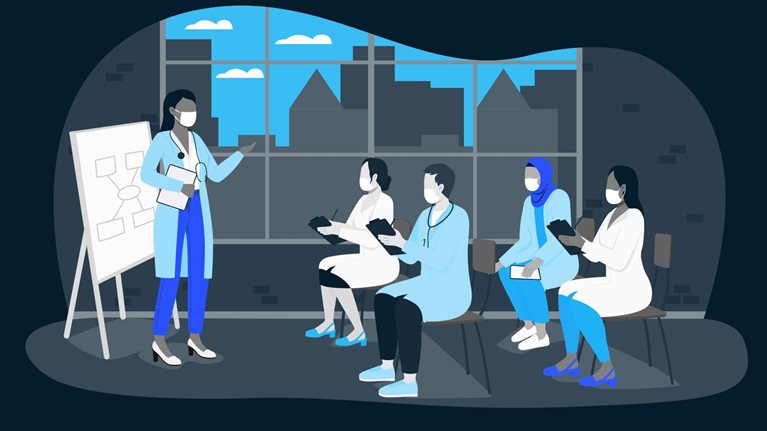
Care for the caretakers: Building the global public health workforce
Advertisement
‘Models of’ versus ‘Models for’
Toward an Agent-Based Conception of Modeling in the Science Classroom
- Published: 26 April 2017
- Volume 26 , pages 49–63, ( 2017 )
Cite this article
- Julia Gouvea ORCID: orcid.org/0000-0002-2228-9066 1 &
- Cynthia Passmore 2
4155 Accesses
118 Citations
14 Altmetric
Explore all metrics
The inclusion of the practice of “developing and using models” in the Framework for K-12 Science Education and in the Next Generation Science Standards provides an opportunity for educators to examine the role this practice plays in science and how it can be leveraged in a science classroom. Drawing on conceptions of models in the philosophy of science, we bring forward an agent-based account of models and discuss the implications of this view for enacting modeling in science classrooms. Models, according to this account, can only be understood with respect to the aims and intentions of a cognitive agent (models for), not solely in terms of how they represent phenomena in the world (models of). We present this contrast as a heuristic— models of versus models for —that can be used to help educators notice and interpret how models are positioned in standards, curriculum, and classrooms.
This is a preview of subscription content, log in via an institution to check access.
Access this article
Price includes VAT (Russian Federation)
Instant access to the full article PDF.
Rent this article via DeepDyve
Institutional subscriptions
Similar content being viewed by others

Tensions Between Learning Models and Engaging in Modeling
Candice Guy-Gaytán, Julia S. Gouvea, … Cynthia Passmore

A Modeling-Based Inquiry Framework for Early Childhood Science Learning

Introduction
This letter, sent to Crick’s son Michael in 1953, was printed in the New York Times in 2013: http://www.nytimes.com/interactive/2013/02/26/science/crick-letter-on-dna-discovery.html?_r=0
Our use of models of and models for is similar to but distinct from that of Keller ( 2000 ) who uses the terms to bridge theory and experiment in biology, referring to representations of gene pathways in molecular biology as both of , in the sense that they represent the mechanisms and for in that they generate new questions that motivate future experiments. Our use is also related to Adúriz-Bravo's ( 2013 ) use of model-for to refer to how models are used to instantiate theory and model-from , which like our “of” connotes representation from the world.
See Giere’s ( 1988 ) chapter on “Theories of Science” for an elaboration of this history as well as Suppe ( 1972 ) for a more detailed history of the rise and fall of logical empiricism.
The practice turn in philosophy of science is often marked by Kuhn’s ( 1970 ) seminal work.
Downes 1992 , Knuuttila ( 2011 ), and Suarez ( 2010 ) represent strong proponents of a “deflationary” account of models.
Adúriz-Bravo, A. (2013). A “semantic” view of scientific models for science education. Science & Education, 22 (7), 1593–1611.
Article Google Scholar
Bailer-Jones, D. M. (2003). When scientific models represent. International Studies in the Philosophy of Science, 17 (1), 59–74.
Berland, L. K., Schwarz, C. V., Krist, C., Kenyon, L., Lo, A. S., & Reiser, B. J. (2016). Epistemologies in practice: making scientific practices meaningful for students. Journal of Research in Science Teaching, 53 (7), 1082–1112.
Clement, J. J. (2000). Model based learning as a key research area for science education. International Journal of Science Education, 22 (9), 1041–1053.
Coffey, J. E., Hammer, D., Levin, D. M., & Grant, T. (2011). The missing disciplinary substance of formative assessment. Journal of Research in Science Teaching, 48 (10), 1109–1136.
Coll, R. K., France, B., & Taylor, I. (2005). The role of models/and analogies in science education: implications from research. International Journal of Science Education, 27 (2), 183–198.
Craver, C. (2006). When mechanistic models explain. Synthese, 153 (3), 355–376.
Damşa, C. I., Kirschner, P. A., Andriessen, J. E. B., Erkens, G., & Sins, P. H. M. (2010). Shared epistemic agency: an empirical study of an emergent construct. Journal of the Learning Sciences, 19 (2), 143–186.
De Regt, H., & Dieks, D. (2005). A contextual approach to scientific understanding. Synthese, 144 (1), 137–170.
Downes, S. (1992). The importance of models in theorizing: a deflationary semantic view. In PSA: proceedings of the biennial meeting of the philosophy of science association (Vol. 1992 , pp. 142–153). Chicago: The University of Chicago Press.
Duschl, R. A. (2008). Science education in three-part harmony: balancing conceptual, epistemic, and social learning goals. Review of Research in Education, 32 (1), 268–291.
Engle, R. A., & Conant, F. R. (2002). Guiding principles for fostering productive disciplinary engagement: explaining an emergent argument in a community of learners classroom. Cognition and Instruction, 20 (4), 399–483.
Ford, M. J. (2008). Disciplinary authority and accountability in scientific practice and learning. Science Education, 92 (3), 404–423.
French, S., & Ladyman, J. (1999). Reinflating the semantic approach. International Studies in the Philosophy of Science, 13 (2), 103–121.
Frigg, R. (2006). Scientific representation and the semantic view of theories. Theoria, 55 , 49–65.
Google Scholar
Giere, R. N. (1988). Explaining science: a cognitive approach . University of Chicago Press.
Giere, R. N. (1994). The cognitive structure of scientific theories. Philosophy of Science, 61 (2), 276–296.
Giere, R. N. (2004). How models are used to represent reality. Philosophy of Science, 71 , 742–752.
Giere, R. N. (2006). The role of agency in distributed cognitive systems. Philosophy of Science, 73 (5), 710–719.
Giere, R. N. (2010). An agent-based conception of models and scientific representation. Synthese, 172 (2), 269–281.
Gilbert, J., & Boulter, C. (Eds.). (2000). Developing models in science education . Dordrecht: Kluwer.
Gilbert, J. K., Boulter, C., & Rutherford, M. (1998). Models in explanations, part 2: Whose voice? Whose ears? International Journal of Science Education, 20 (2), 187–203.
Godfrey-Smith, P. (2006). The strategy of model-based science. Biology and Philosophy, 21 (5), 725–740.
Grandy, R. E., & Duschl, R. A. (2007). Reconsidering the character and role of inquiry in school science: analysis of a conference. Science & Education, 16 (2), 141–166.
Halloun, I. (2007). Mediated modeling in science education. Science & Education, 16 (7), 653–697.
Hammer, D., Russ, R., Mikeska, J., & Scherr, R. E. (2008). Identifying inquiry and conceptualizing students’ abilities. In R. A. Duschl & R. E. Grandy (Eds.), Teaching scientific inquiry: recommendations for research and implementation (pp. 138–156). Rotterdam, NL: Sense Publishers.
Harrison, A. G., & Treagust, D. F. (2000). A typology of school science models. International Journal of Science Education, 22 (9), 1011–1026.
Izquierdo-Aymerich, M., & Adúriz-Bravo, A. (2003). Epistemological foundations of school science. Science & Education, 12 , 27–43.
Justi, R., & Gilbert, J. K. (2002). Science teachers’ knowledge about and attitudes towards the use of models and modelling in learning science. International Journal of Science Education, 24 (12), 1273–1292.
Justi, R., & Gilbert, J. K. (2003). Teachers’ views on the nature of models. International Journal of Science Education, 25 (11), 1369–1386.
Keller, E. F. (2000). Models of and models for: Theory and practice in contemporary biology. Philosophy of Science, 67 (S1), S72–S86.
Knorr-Cetina, K. (1999). Epistemic cultures: how the sciences make knowledge . Harvard University Press.
Knuuttila, T. (2005). Models, representation, and mediation. Philosophy of Science, 72 (5), 1260–1271.
Knuuttila, T. (2011). Modelling and representing: An artefactual approach to model-based representation. Studies in History and Philosophy of Science Part A, 42 (2), 262–271.
Kuhn, T. S. (1970). The structure of scientific revolutions (2nd ed.). Chicago: University of Chicago Press.
Levins, R. (1968). Evolution in Changing Environments. Princeton, NJ: Princeton University Press.
Manz, E. (2012). Understanding the codevelopment of modeling practice and ecological knowledge. Science Education, 96 (6), 1071–1105.
Morgan, M. S., & Morrison, M. (1999). Models as mediating instruments. In M. Morrison & M. S. Morgan (Eds.), Models as mediators. perspectives on natural and social Science (pp. 10–37). Cambridge University Press.
Morrison, Margaret. (2015). Reconstructing reality: models, mathematics, and simulations . Oxford University Press.
National Research Council. (2012). A framework for K-12 science education: practices, crosscutting concepts, and core ideas . Washington DC.
Nersessian, N. J. (1992). How do scientists think? Capturing the dynamics of conceptual change in science. Cognitive models of science, 15 , 3–44.
Nicholson, A. J. & Bailey, V. A. (1935). The balance of animal populations. Proceedings of the Zoological Society of London, 3, 551-598.
Nersessian, N. J. (1999). In L. Magnani, N. Nersessian, & P. Thagard (Eds.), Model-based reasoning in conceptual change (pp. 5–22). New York: Kluwer Academic/Plenum Publishers.
Nersessian, N. J. (2002). The cognitive basis of model-based reasoning. In The cognitive basis of science (pp. 133–153). Cambridge University Press.
NGSS Lead States. (2013). Next generation science standards: for states, by states . Washington, DC: The National Academies Press.
Odenbaugh, J. (2005). Idealized, inaccurate but successful: a pragmatic approach to evaluating models in theoretical ecology. Biology and Philosophy, 20 (2–3), 231–255.
Osborne, J. (2014). Teaching scientific practices: meeting the challenge of change. Journal of Science Teacher Education, 25 (2), 177–196.
Park, T. (1948). Experimental studies of interspecies competition. I. Competition between populations of flour beetles, Tribolium confusum Duval and Tribolium castaneum Herbst’. Ecological Monographs, 18, 265–307.
Passmore, C., Gouvea, J. S., & Giere, R. N. (2014). Models in science and in learning science: focusing scientific practice on sense-making. In M. R. Matthews (Ed.), International handbook of research in history, philosophy and science teaching . Springer.
Schwab, J. J. (1960). Inquiry, the science teacher, and the educator. The School Review, 68 (2), 176–195. doi: 10.2307/1083585 .
Schwarz, C., Passmore, C., & Reiser, B. (Eds.). (2017). Helping students make sense of the world using next generation science and engineering practices . Arlington: NSTA Press.
Sikorski, T., Winters, V., & Hammer, D. (2009). Defining a learning progressions for scientific inquiry. In Learning Progressions in Science (LeaPS) Conference. Iowa City, IA.
Simberloff, D. (1980). A succession of paradigms in ecology: Essentialism to materialism and probabilism. Synthese 43 (1), 3-39.
Stroupe, D. (2014). Examining classroom science practice communities: how teachers and students negotiate epistemic agency and learn science-as-practice. Science Education, 98 (3), 487–516.
Suarez, M. (2002). An inferential conception of scientific representation. Philosophy of Science, 71 (5), 767–779.
Suárez, M. (2003). Scientific representation: Against similarity and isomorphism. International Studies in the Philosophy of Science, 17, 225–244.
Suarez, M. (2010). Scientific representation. Philosophy Compass, 5 (1), 91–101.
Suppe, F. (1972). What’s wrong with the received view of the structure of scientific theories? Philosophy of Science, 39 (1), 1–19.
Suppe, F. (1989). The Semantic Conception of Theories and Scientific Realism . Urbana: University of Illinois Press.
Svoboda, J., & Passmore, C. (2013). The strategies of modeling in biology education. Science & Education, 22 (1), 119–142.
Teller, P. (2001). Twilight of the perfect model model. Erkenntnis, 55 , 393–415.
Teller, P. (2010). “Saving the phenomena” today. Philosophy of Science, 77 (5), 815–826.
van Fraassen, B. (2010). Scientific Representation: Paradoxes of Perspective. Analysis 70 (3), 511–514.
van Fraassen, B. (1980). The scientific image . Oxford: Oxford University Press.
Download references
Acknowledgments
We gratefully acknowledge the suggestions provided by the reviewers of this manuscript. This material is based in part upon work supported by the National Science Foundation under grants DRL-0554652 and DRL-13489900 to the University of California at Davis, DRL-1020316. This work would not have been possible without the support and community created by the ISIM and MBER projects. In particular, we wish to acknowledge the friendship, mentoriship, and the many intellectual exchanges with Wendell Potter around the practice of modeling. We dedicate this to his memory.
Author information
Authors and affiliations.
Departments of Education and Biology, Tufts University, Medford, MA, 02155, USA
Julia Gouvea
School of Education, University of California, Davis, Davis, CA, 95616, USA
Cynthia Passmore
You can also search for this author in PubMed Google Scholar
Corresponding author
Correspondence to Julia Gouvea .
Ethics declarations
Conflict of interest.
The authors have no conflicts of interest to declare.
Rights and permissions
Reprints and permissions
About this article
Gouvea, J., Passmore, C. ‘Models of’ versus ‘Models for’. Sci & Educ 26 , 49–63 (2017). https://doi.org/10.1007/s11191-017-9884-4
Download citation
Published : 26 April 2017
Issue Date : March 2017
DOI : https://doi.org/10.1007/s11191-017-9884-4
Share this article
Anyone you share the following link with will be able to read this content:
Sorry, a shareable link is not currently available for this article.
Provided by the Springer Nature SharedIt content-sharing initiative
- Epistemic agency
- Philosophy of science
- Find a journal
- Publish with us
- Track your research
Tar Heel team begins preservation of ancient Nepal temple
Religious studies scholar and computer scientist want to create 3D model of 1,500-year-old Buddhist shrine.

In a groundbreaking initiative, a team from Carolina’s College of Arts and Sciences traveled to Nepal in October to begin the digital preservation of one of the country’s most venerable religious shrines. The 1,500-year-old Swayambhu Temple, a jewel of Buddhist heritage perched atop a hill in the Kathmandu Valley, is one of 10 UNESCO World Heritage sites in Nepal.
Lauren Leve , an associate professor of religious studies, and Jim Mahaney , a research scientist in the computer science department, started the long process of capturing the data needed to create an accurate 3D model of the entire temple complex. One of the project’s goals is to allow UNC-Chapel Hill students a chance to visit Swayambhu in virtual reality.
The project leverages the distinct skill sets of Leve and Mahaney to both access and capture this sacred site. Leve and Mahaney are using a three-pronged data capture approach, combining 3D laser scans, photogrammetry and drone photography to create three separate models of the temple complex. The three models will then be combined to form one photorealistic model of the temple complex which will be viewable on multiple device types, so that access to the model is not limited by the technology available in different parts of the world.
Crowds, monkeys and lots of data
One challenge of capturing Swayambhu was working around crowds of people and animals. Typically, a historic site would be closed to allow for scanning and photogrammetry, but as an active temple, Swayambhu could not be closed and is visited by worshippers and tourists nearly 24 hours a day.
While the humans could be reasoned with, a local population of more than 400 rhesus macaque monkeys also has free range over the entire site. The monkeys refused to take direction from the team, often flaunting their independence by climbing about in the background of the scans. This interference will require hours of additional post-processing to remove monkeys from the 3D model.
Because of the task’s immense scale, Leve and Mahaney partnered with a local heritage preservation group, Baakhan Nyane waa (which translates from the Newar or Nepal Bhasa language as “Come, listen to stories”), and the Kathmandu Engineering College. Raj Maharjan from Baakhan Nyane waa worked with Mahaney to teach graduate students from the college in a seven-day course on laser scanning and photogrammetry, which included many hours of hands-on fieldwork at Swayambhu.
During the course, the team completed 92 scans and took thousands of photos from the ground and hundreds from the sky. The work of combining these into a 3D model will take many months and will provide opportunities for UNC-Chapel Hill computer science students to work with this dataset not only on editing process but also to explore various advanced techniques in virtual reality, such as redirected walking.
Students in Nepal will also continue to work with the data, making this an international collaboration that not only works to create an outstanding model of the site but considers the subtle nuances of how the site is viewed by the Nepalese.
While the amount of data collected on this first trip is vast, additional visits to Nepal are necessary to capture the entire temple. In a planned trip in October 2024, the team will begin expanding the model to include more of the structures located adjacent to the main temple.
This work is supported by a CFE/Lenovo Instructional Innovation grant with additional hardware support from Nvidia and the School of Data Science and Society.
Read more about this trip and the precursor to it .
School of Education students networked in Raleigh with representatives from 11 state agencies.
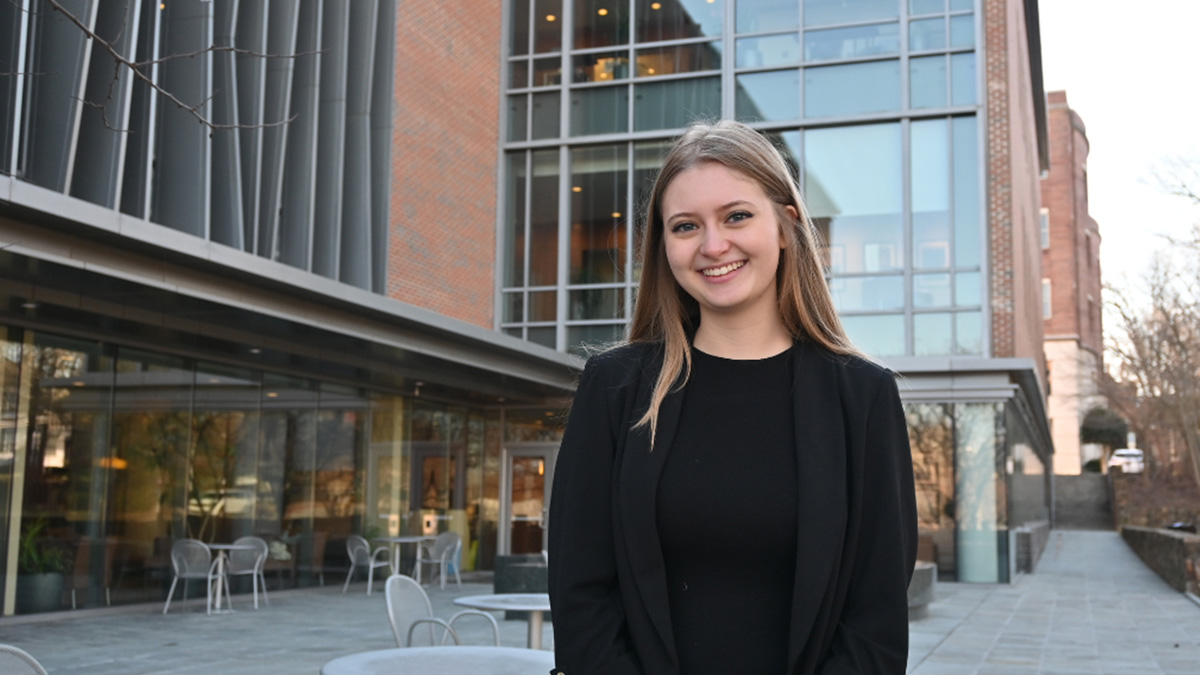
Global studies scholar aspires to diplomacy
After earning a master’s degree, Kat Goodpaster became assistant director of Carolina’s Russian Flagship Program.
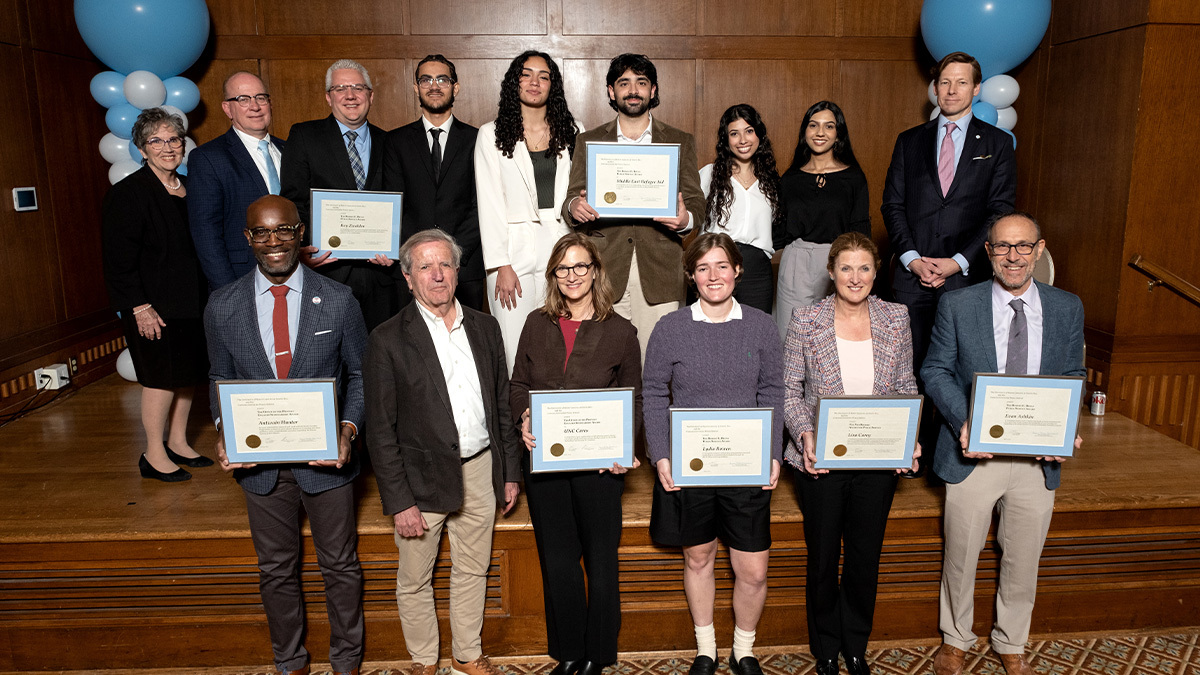
Public Service Awards go to 7 people, 2 groups
The Carolina Center for Public Service honored work on health disparities, refugee aid and more.
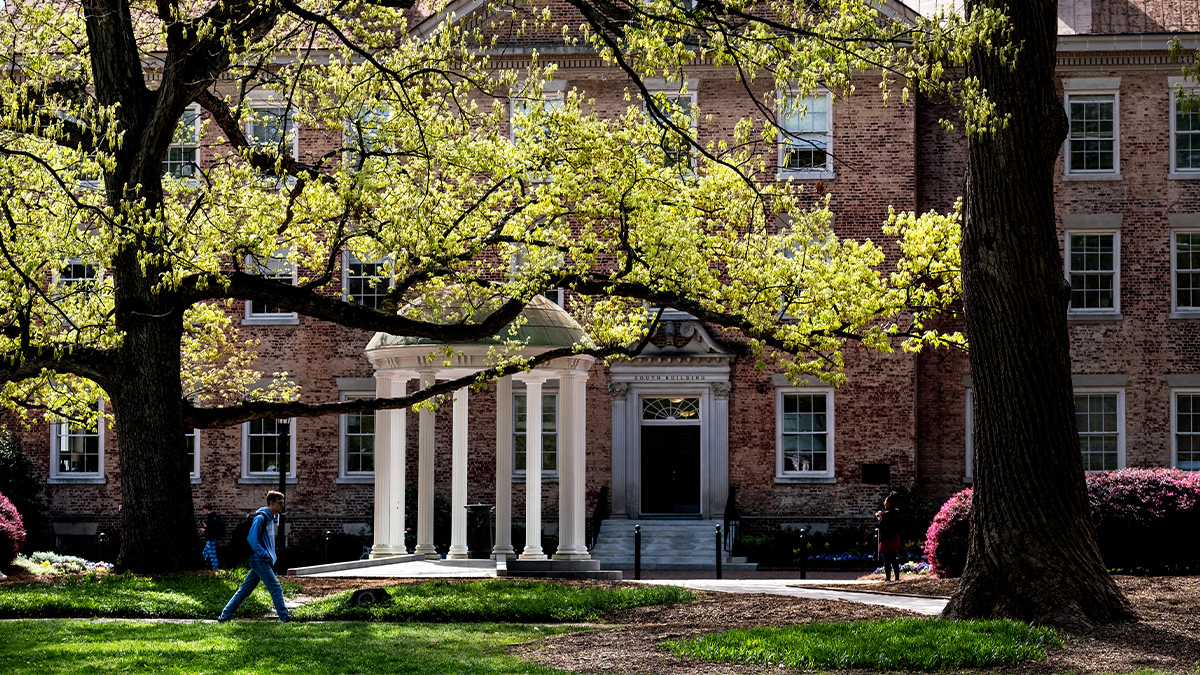
UNC-Chapel Hill graduate programs ranked among best in nation
U.S. News & World Report’s 2024 “Best Graduate Schools” list named multiple Carolina graduate degree programs in the top 10, including UNC Eshelman School of Pharmacy at No. 1.

Broadway writer brings new comedy to PlayMakers
Fresh off the debut of her musical adaptation of “The Notebook,” Bekah Brunstetter ’04 will debut “The Game” in Chapel Hill.
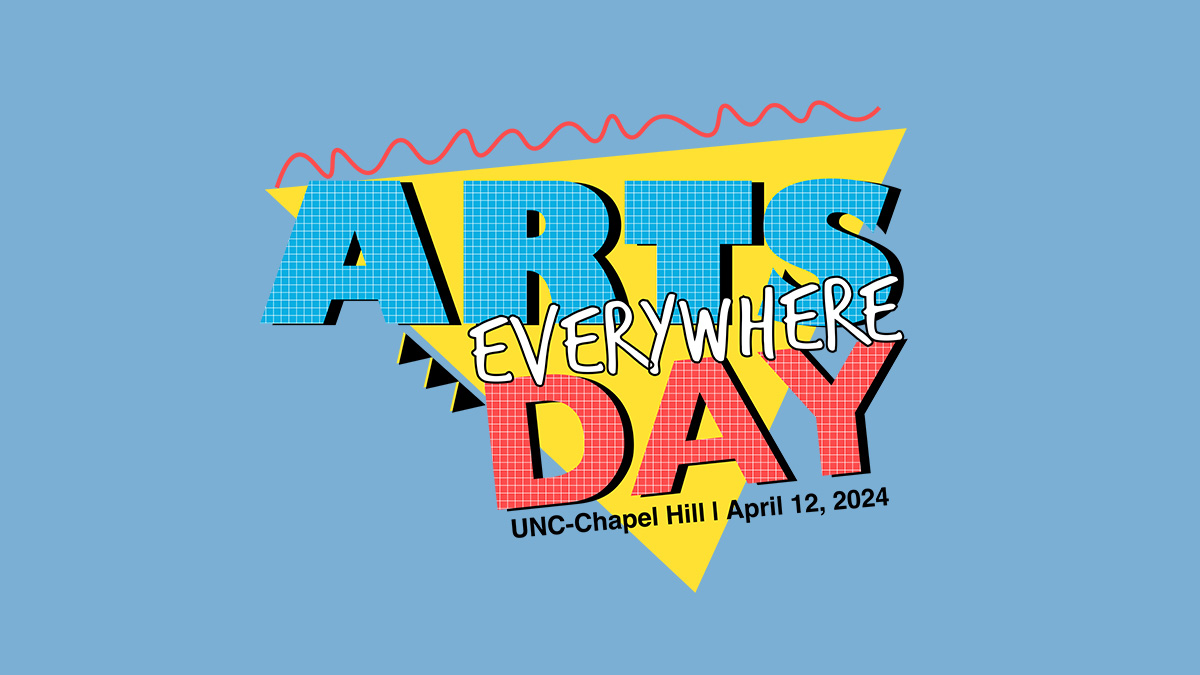
Arts Everywhere Day set for April 12
The eighth annual campus-wide event celebrates artists creating in all mediums.
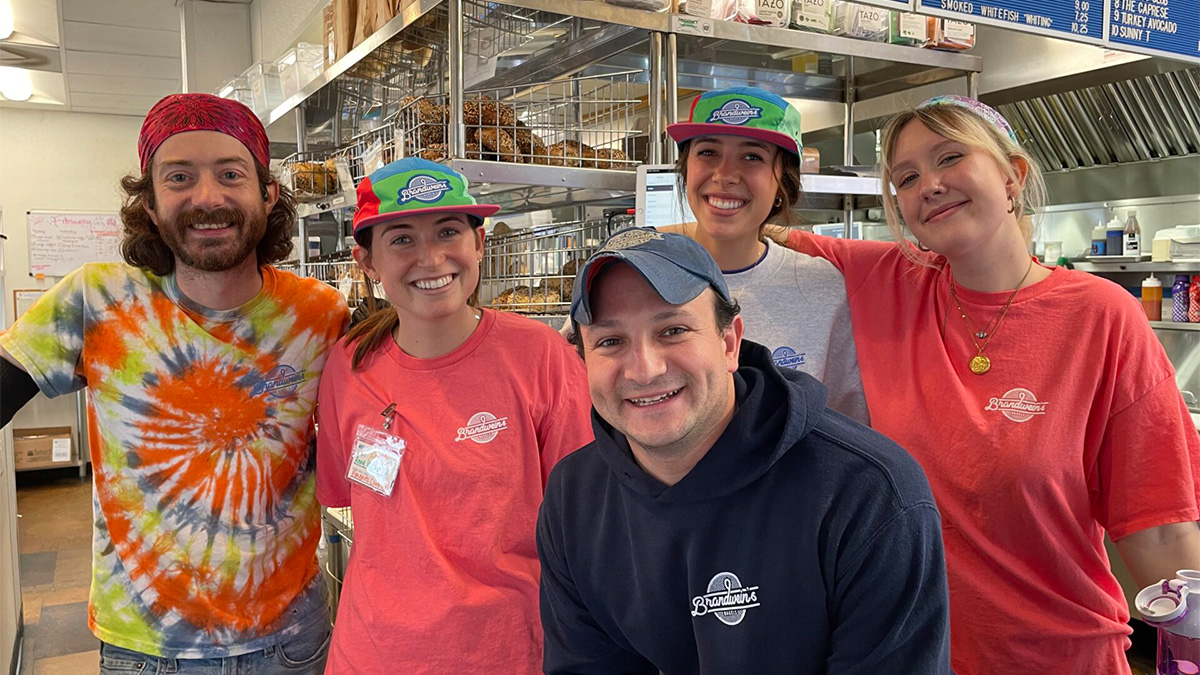
Brandwein’s Bagels offers authentic NYC flavor
MBA graduate Alex Brandwein turned his love of New York-style bagels into a local business.
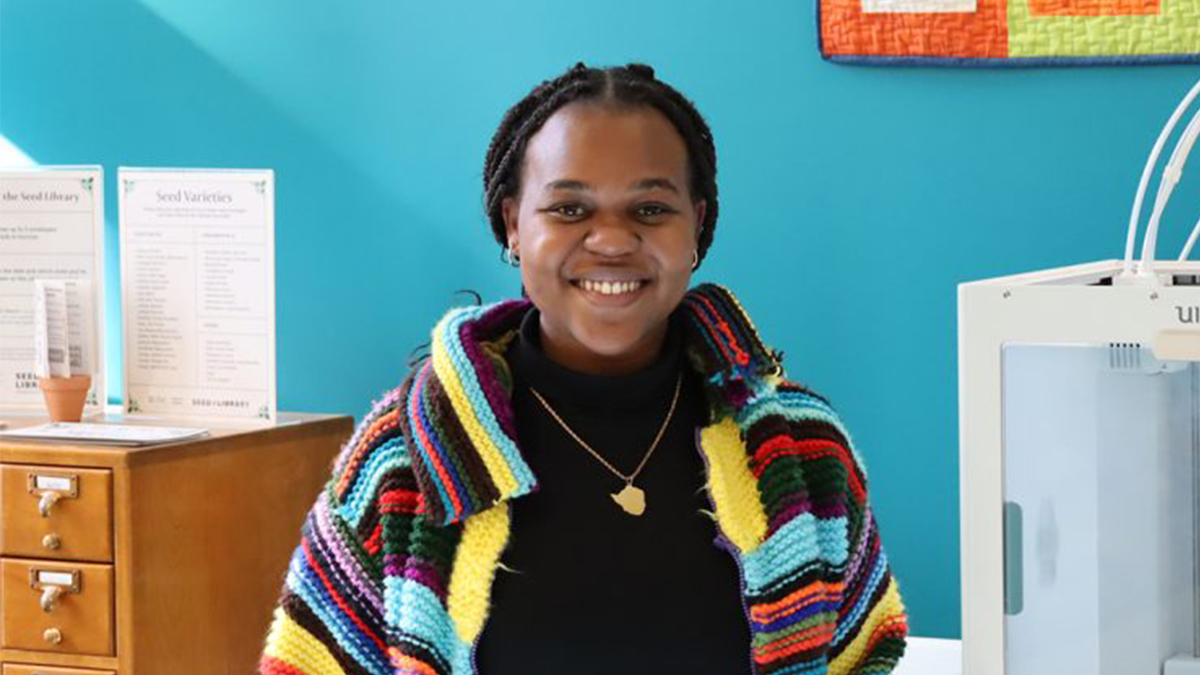
Bernice Meja has a passion for fixing broken systems
The discovery led her to a master’s program at the School of Information and Library Science.
Share on Mastodon

- Skip to main content
- Skip to main navigation
- Skip to site search
- Skip to side bar
- Skip to footer
BC Gov News
- News Archive
- Live Webcast
- Office of the Premier
- Agriculture and Food
- Attorney General
- Children and Family Development
- Citizens' Services
- Education and Child Care
- Emergency Management and Climate Readiness
- Energy, Mines and Low Carbon Innovation
- Environment and Climate Change Strategy
- Indigenous Relations and Reconciliation
- Intergovernmental Relations Secretariat
- Jobs, Economic Development and Innovation
- Mental Health and Addictions
- Municipal Affairs
Post-Secondary Education and Future Skills
- Public Safety and Solicitor General
- Social Development and Poverty Reduction
- Tourism, Arts, Culture and Sport
- Transportation and Infrastructure
- Water, Land and Resource Stewardship
B.C. takes action with new wildfire training and education centre, first of its kind in North America

More protections for renters, parents, landlords, families
More from the premier.
- Factsheets & Opinion Editorials
- Search News
- Premier's Bio
Province strengthens drought preparedness

B.C. vineyards, orchards receive help to replant for changing climate
More from this ministry.
- Minister's Bio
People doing anti-racism work given more resources to fight hate

Annual awards honour B.C. anti-racism advocates
Expanded eligibility, new supports available for current, former youth in care.

New position expedites progress on Indigenous child welfare
Governments of canada and british columbia working together to bring high-speed internet to more than 7,500 households.

Michael McEvoy to serve as interim information and privacy commissioner
Families no longer charged fees for child care waitlists.

New Mission Senior Secondary adds 250 more student spaces
Upgrades to wastewater infrastructure coming to comox valley, bc hydro issues call for new clean electricity to power b.c.’s future.

Saving people money on their energy bills
Park additions boost outdoor recreation, strengthen ecosystem protection, reducing emissions for a cleaner future for british columbians, budget 2024: taking action for people, families in b.c..

Climate action tax credit helps people with everyday costs
Enhanced technology will help better predict wildfire movement, growth, launch of spring covid-19 vaccine boosters marks end of respiratory illness season, new saanich peninsula after-hours primary-care clinic launches.

New zoning, amenities, tenant protections support people, create livable communities
New legislation will eliminate discriminatory barriers for first nations.

Engagement results released on proposed legislative amendments to First Nations land ownership
Throne speech lays out vision of a stronger b.c. that works better for people.

Province honours people providing extraordinary community service
Research support helps fight metabolism diseases.

Minister’s statement on March Labour Force Survey results
Minimum wage increases to $17.40 an hour on june 1.

Minister’s and parliamentary secretary’s statement on Construction and Skilled Trades Month
Budget 2024 supports improvements to treatment, recovery services.

Youth benefit from significant increase in mental-health, addiction care
Expanding multi-language support, services for newcomers, construction underway on cowichan sportsplex field house, new legislation recognizes work of first nations post-secondary institutes.

TradeUpBC builds, enhances tradespeoples’ skills
New digital platform improves response, safety for people in crisis in port moody.

New legislation paves the way for police reform
Changes aim to help people out of poverty, engagement launched for canadians of south asian heritages museum.

Historic water bomber destined for wildfire aviation exhibit
Province, yvr work together to support good jobs, fight pollution.

Airport improvements support services, growth for communities
Province supports new weir to keep cowichan river flowing.

Province strengthens flood defences, protecting people, communities
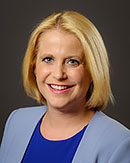
Honourable Lisa Beare
Email: [email protected]
News Release
Media contacts, ministry of post-secondary education and future skills.
- Visit Ministry Website
Featured Topics
- Indigenous Education
- Adult Education
- Education Quality Assurance
- International Education
- Post-Secondary Data
- Post-Secondary Funding & Accountability
Featured Services
- Find an Institution
- Search for Post-Secondary Programs
- Apply for Student Financial Assistance
- SkilledTradesBC
The work of First Nations to provide post-secondary education to their communities will be supported by ongoing funding provided under new legislation, reflecting the integral role of First Nations-mandated post-secondary institutes as a key pillar of B.C.’s post-secondary education system.
“This legislation and the funding it commits will support the critical work underway at First Nations-mandated institutes,” said sumaxatkʷ Tracey Kim Bonneau, chair of the Indigenous Adult and Higher Learning Association. “Our institutes provide culturally safe and supportive post-secondary and adult education to their communities, including addressing the urgent need for language learning and revitalization. We look forward to working with the Province to jointly develop the policies and processes to implement this legislation.”
The Ministry of Post-Secondary Education and Future Skills, the First Nations Education Steering Committee (FNESC) and the Indigenous Adult and Higher Learning Association (IAHLA) have worked together to develop new legislation that commits the Province to contribute ongoing operational funding and capacity funding for eligible institutes.
First Nations-mandated institutes play a vital role by providing First Nation learners with access to a safe and culturally relevant education rooted in their language and culture that supports successful experiences and outcomes.
“Supporting First Nations post-secondary education is a critical step in reconciliation,” said Lisa Beare, Minister of Post-Secondary Education and Future Skills. “Our work with the First Nations Education Steering Committee and the Indigenous Adult and Higher Learning Association on this new legislation commits to providing funding to support eligible institutes in British Columbia.”
Annual funding of $6.45 million has been allocated through the StrongerBC: Future Ready Action Plan for eligible institutes.
The new legislation commits operational and capacity funding to support institutional priorities in the delivery of adult and post-secondary education. These priorities include growing First Nations’ capacity toward a skilled and diverse workforce, revitalizing their languages and cultures, and addressing the continuing impacts of colonialism and racism.
“This legislation recognizes First Nations-mandated institutes as integral to B.C.’s post-secondary system,” said Tyrone McNeil, president, First Nations Education Steering Committee. “We appreciate the stability this legislation will offer to our institutes as they grow to meet the needs of their communities. We look forward to the work ahead to implement the B.C. First Nations tripartite post-secondary education model in the spirit and intent of Article 14 of the UN Declaration on the Rights of Indigenous Peoples.”
The new legislation addresses the United Nations Declaration on the Rights of Indigenous Peoples, specifically Article 14(1), and delivers on commitments in the Declaration on the Rights of Indigenous Peoples Act (Declaration Act) Action Plan. Through continued consultation and collaboration, the Province will work with the First Nations Education Steering Committee and the Indigenous Adult and Higher Learning Association to implement the new legislation.
“For years, the right to a post-secondary education was denied to First Nations learners,” said Murray Rankin, Minister of Indigenous Relations and Reconciliation. “Culturally appropriate opportunities did not exist. Through this new legislation, which addresses a key commitment in the Declaration Act Action Plan, the Province is helping First Nations-mandated institutes better prepare First Nations learners for a bright future in whatever field they choose.”
IAHLA represents more than 40 Indigenous adult and post-secondary educational institutes in British Columbia. Theses institutes offer a broad spectrum of courses and programs, including college and university programs leading to certificates and diplomas, adult basic education leading to the adult Dogwood diploma for secondary school completion, language instruction, and occupation specific training and upgrading.
FNESC works under the direction of First Nations in British Columbia to advance quality First Nations education. FNESC is accountable to all First Nations in B.C. and has a formal protocol with the First Nations Leadership Council that recognizes FNESC as the lead policy and advocacy body for First Nations education.
Learn More:
To learn more about IAHLA, visit: https://www.iahla.ca/
To learn more about FNESC, visit: http://www.fnesc.ca/
To learn more about Declaration Act Action Plan, visit: https://declaration.gov.bc.ca/
For more information about B.C. legislation, visit: https://strongerbc.gov.bc.ca/Legislation
Related Articles
B.c. implements federal changes for new international students.

Connect with the Ministry
View the Ministry's latest photos on Flickr.
Watch the Ministry's latest videos on YouTube.
Acknowledgment
The B.C. Public Service acknowledges the territories of First Nations around B.C. and is grateful to carry out our work on these lands. We acknowledge the rights, interests, priorities, and concerns of all Indigenous Peoples - First Nations, Métis, and Inuit - respecting and acknowledging their distinct cultures, histories, rights, laws, and governments.
Connect with Us:
- Newsletters
- Accessibility

IMAGES
VIDEO
COMMENTS
McREL International is a nonprofit, nonpartisan organization committed to improving education outcomes for all students through applied research, product development, and professional service to teachers and education leaders. ... particular model (proud as we are of our own) but to get educators thinking about the processes they'll
Learn about different perspectives on learning, such as behaviorism, constructivism, and operant conditioning, and how they apply to classrooms. Explore the concepts, terms, and examples of each theory and model of learning.
At a glance. There are five primary educational learning theories: behaviorism, cognitive, constructivism, humanism, and connectivism. Additional learning theories include transformative, social, and experiential. Understanding learning theories can result in a variety of outcomes, from improving communication between students and teachers to ...
"Schools of the Future: Defining New Models of Education for the Fourth Industrial Revolution" outlines a new framework for defining quality education in the new economic and social context and shares key features of 16 schools, systems and programmes pioneering the future of education.
Four Models. To better understand global education in context, a team from George Washington University (GW) and the District of Columbia public schools (DCPS) made a series of virtual and in ...
Learn about the three main schemas of learning theories and 15 influential theorists in education. Find out how to apply behaviorism, cognitivism and constructivism in your teaching practice with examples and summaries.
Abstract. This article analyses three normative accounts that can underlie educational policies, with special attention to gender issues. These three models of education are human capital theory, rights discourses and the capability approach. I first outline five different roles that education can play.
Learn about the educational model of child development and intervention, which involves adults teaching children skills and behaviors to achieve higher levels of functioning. Explore the role of responsiveness, pivotal behaviors, and parenting in this model.
Abstract. Pedagogy is a discipline concerned with theories and practices of education. Its epistemological model is complex. It may be considered as qualified by two structural directions: pluralism and dialecticity. The pluralism of pedagogy is represented by its possible theoretical routes, by the different levels of sharing of disciplinarity ...
Three models of education. This article analyses three normative accounts that can underlie educational policies, with special attention to gender issues.These three models of education are human capital theory, rights discourses and the capability approach. I first outline five different roles that education can play.
Measuring and Comparing Achievements of Learning Outcomes in Higher Education in Europe (CALOHEE), an EU funded project envisages a new model. The paper will partly be based on the (initial) findings of this project. International cooperation in the context of the EHEA is essential to engage all, and make a change.
In developing a theoretical model useful to research inclusive education, we used institutional theory to interpret the concept of inclusion. In 1966, Berger and Luckmann described institutionalisation as '[t]he social construction of reality' and claimed that people socially construct institutions through their everyday communication with ...
Three models of education. This article analyses three normative accounts that can underlie educational policies, with special attention to gender issues. These three models of education are human capital theory, rights discourses and the capability approach. I first outline five different roles that education can play.
Bildung and Paideia examines traditional humanistic ideals in light of philosophical reflection on the need for education of the whole human being. The study of what it is to be human is traditionally the task of the humanities. In recent years, however, the humanities have been increasingly subordinated to technological, economic, and ...
person's potential: memory, reasoning, aesthetic sense, physical capacity and. communication/social skills; developing critical thinking and exercising independent. judgment; and developing ...
Andragogic Education. With these new programs came a revision of the traditional (pedagogical) models of postsecondary education. There was now a new model—called andragogy—that was championed by such stalwarts of continuing and adult education as Malcolm Knowles (Knowles, 1980; Knowles and Associates, 1984) and Patricia Cross (1981).
This is a unique definition, because models of instruction usually are defined by how the teacher is structuring and delivering the lesson, rather than by how the students are engaged in learning the lesson learning targets. In most models of instruction, even if student engagement is part of the teacher's structure, the student's role is ...
Specifically, a significant part of this chapter is devoted to shared models and/or theories (e.g. distributed leadership, dispersed leadership), as these by definition include middle leaders. Central to the review is a commitment to the dual purposes of education outlined in Chap. 1—the development of individual students and the development ...
Within these commu- ful, and as the needs of trialized in the latter part of nities, decisions will be society more urgently call made by those in the best position to for a new model of education, American the 1800s, today's factory make themâ by students, teachers, and schools will be caught up by irresistible model of K-12 education ...
An educational model encompasses all the different educational theories that are accepted as meaningful and the approved teaching methods being used within the classroom. Educational models are ...
New models of medical education are focusing on integrating systems-level understanding of human physiology and also on integrating medical knowledge with that of nursing and public health. Public health education, on the other hand, which historically has been the domain of medical professionals or epidemiologists, is now increasingly ...
6. Felder-Silverman Learning Style Model. This learning model is focused on the fact that every individual has their own preference when it comes to the process of grasping new information. Certain individuals may have multiple preferences, some may shift from one to the other, and some have only one.
The landscape of alternative education is vast and varied, encompassing a broad range of philosophies and methodologies. Historically, alternative models of education have coexisted with the public education system since its inception in the first half of the 19th century. These models have been developed by educators, parents, and students who ...
Modern online education has the capacity to provide intelligent educational services by automatically analyzing substantial amounts of student behavioral data. Knowledge Tracing (KT) is one of the fundamental tasks for student behavioral data analysis, aiming to monitor students' evolving knowledge state during their problem-solving process. In recent years, a substantial number of studies ...
What began as an online class on coding during the pandemic has morphed into an effective model for creating learning opportunities worldwide, outside of a formal classroom. First launched in 2020, the six-week Code in Place course teaches fundamentals from Stanford's flagship introduction to Python programming course, CS106A. The unique ...
Resignations among healthcare workers have increased steadily from about 400,000 per month in 2020 to nearly 600,000 per month in May 2023. 1"Job openings and labor turnover—July 2023," US Bureau of Labor Statistics, accessed August 20, 2023. The vacancy rate—the difference between the number of job openings and hires—has also ...
In nursing education, debriefing after clinical - whether in person or in simulation - is essential. It is a time where educators provide feedback, analyze actions, and encourage reflections to improve future performance (Fegran et al., 2023). ... This model uses Socratic questioning and principles of active learning to uncover thinking ...
The inclusion of the practice of "developing and using models" in the Framework for K-12 Science Education and in the Next Generation Science Standards provides an opportunity for educators to examine the role this practice plays in science and how it can be leveraged in a science classroom. Drawing on conceptions of models in the philosophy of science, we bring forward an agent-based ...
By Jim Mahaney, computer science department , Tuesday, April 9th, 2024. (photo by Jim Mahoney) In a groundbreaking initiative, a team from Carolina's College of Arts and Sciences traveled to Nepal in October to begin the digital preservation of one of the country's most venerable religious shrines. The 1,500-year-old Swayambhu Temple, a ...
Annual funding of $6.45 million has been allocated through the StrongerBC: Future Ready Action Plan for eligible institutes. The new legislation commits operational and capacity funding to support institutional priorities in the delivery of adult and post-secondary education. These priorities include growing First Nations' capacity toward a ...